

1 Issue N º 4 Fireborne Issue N º 4 4/24

 That Wild Fire by Beth Maciorowski
That Wild Fire by Beth Maciorowski



Fireborne Magazine 2024 Issue º 4
FOUNDER AND EDITOR-IN-CHIEF
Elisa Mantovani
DESIGN EDITOR
Nikki Ritmeijer
LAYOUT AND ART DIRECTION
Elisa Mantovani
CONTACT
invictus.mgzn@invictusmagazine.com www.invictusmagazine.com
All content © 2024 INVICT/US Magazine

Issue N º 4 Fireborne
, Rithika
Rithika Merchant ~ ~ ~
Cover: Desert Body, Kerstin de Beer Left: Festival of the Phoenix Sun
Merchant Right top: Shelter, Rithika Merchant Right bottom: Crossing the First Threshold,
CONTRIBUTORS
AMALIA RACHEL Painter, Visual Artist Sweden
ANDREA STELLAR FOLK Ceremony & Retreat Facilitator Spain / The Netherlands
APHRA NATLEY Artist, Therapist, Healer The Netherlands / Great Britain
BETH MACIOROWSKI Film Photographer United States of America
CADHLA KENNEDY KO Filmmaker, Photographer Spain / Ireland / Philippines
CÉSAR VÁSQUEZ ALTAMIRANO Film Photographer Perú
DAVIDE LEPORE Biologist Italy / Great Britain
ELLI PIPIC Social Justice & Inclusion Specialist Croatia / Austria
ELLIE BENTON Artist Great Britain
EMMA SURTEES Embroiderer Great Britain
EVELYNE POSTIC Visual Artist France
GRAHAM DEAN Artist Great Britain
GREGORY GREGORI Scientist, Alchemist, Mystic & Artist Cyprus
JARRETT EDMUND Photographer, Visual Artist Canada
JOIE DE WINTER
Ceremonial Singer, Songwriter, Poet, Harp Maker, Voice Facilitator Great Britain
KDB, KERSTIN DE BEER Model, Vocalist, Songwriter, Multi-Instrumentalist, Sound Healer South Africa
KIRSTY HARRIS Artist Great Britain
KLAUDIA ZABEK Artist, Painter Poland
NALI LIA WEINMAN Artist United States of America
LOLA MANSELL Photographer Great Britain / France
MAINAK BOSE Visual Artist India
MARI WESTENG SØRENSEN Artist Norway
MONICA VACCARI Multimedia Artist, Sculptor, Photographer Italy
OLEKSII REVIKA Visual Artist Ukrainian
ROBERT HUNTER JONES Poet / Essayist, Teacher, Former Fire Researcher & Hotshot United States of America
TORUS ENERGY
Multifaceted Artist, Creator United Kingdom
VINCENT KARCHER Photographer Canadian / French
ZACKIEL LEWIS-GRIFFITHS Singer / Songwriter, Musician, Community Organiser France / Great Britain by Lainey
Fireborne
Conant


8 Fireborne
by Emma Day
Issue N º 4 CONTENTS PART I EMBERS OF ANTIQUITY: EXPLORING THE PRIMORDIAL AND ANCIENT FLAMES OF CREATION 16 THE FIRST AND LAST BREATH by Aphra Natley 18 METAMORPHOSIS by Amalia Rachel 26 FIRE OF THE GODS, HANDS OF THE MORTALS by Gregory Gregori 28 BORN OF FIRE by Emma Surtees 36 THE SACRED DANCE OF FLAMES: EXPLORING THE RITUALISTIC USE OF FIRE IN CEREMONIES by Andrea Stellar Folk 40 THE KISS by Graham Dean 42 SUN OF GOD by Torus Energy 44 NOTHING TO PROVE by Mainak Bose PART II EARTH’S INFERNO: HARNESSING FIRE’S WRATH 54 OF FIRE AND MAN by Davide Lepore 56 WAR ON UKRAINE by Oleksii Revika 62 ENDANGERED EARTH: DEATH TRANSFORMATION by Mari Westeng Sørensen 64 GLOBAL ‘SECURITY’ by Lola Mansell 72 EMBERS OF EMPATHY by Elli Pipic 75 THE LETHAL CLOUD by Kirsty Harris 78 LAST SURVIVORS by Vincent Karcher 79 STOP THE COUP by César Vásquez Altamirano 86 HOW I LEARNED [TO LOVE] THE ALGORITHM by Jarrett Edmund 92 THE FIRE THIS TIME by Robert Hunter James PART III REKINDLING FLAMES: BLAZE OF PROGRESS RISING FROM THE ASHES 100 DESERT BODY by Kerstin de Beer 106 GAMBIA BUSH-BURNER by Vincent Karcher 110 TÚNELS (I, II, III) A MAN IN FLAMES by Cadhla Kennedy Ko 114 QUAND LA LUMIÈRE BRILLE, DANSENT LES OMBRES WHEN THE LIGHT SHINES, THE SHADOWS DANCE by ZackieL Lewis-Griffiths 120 WITHIN ME, A WOMB OF FIRE by Nali Lia Weinman 122 CREATION & DESCTRUCTION by Ellie Benton 126 RAKU by Monica Vaccari 130 IGNITE THE SOUL by Klaudia Zabek 134 ETERNAL METAMORPHOSIS OF THE BEING by Evelyne Postic 140 MOBORAN WATER DRAGON by Joie de Winter 142 KEEP THE FIRE BURNING by Elisa Mantovani



10 Fireborne
by Elisa Mantovani
Charging my Fire & Self Portrait
EDITOR’S LETTER
Dear Readers,
Welcome to invict/us 4th edition Fireborne, that delves into the mesmerizing yet tumultuous nature of fire. Beginning our exploration at the cosmic level, let us not forget the profound significance of fire, for the very flames of the sun bestow upon us life and light, underscoring the intricate interplay of fire in both the grand cosmos and the intimate corners of our existence. As we embark on our journey into the heart of Fireborne, we’re reminded of fire’s multifaceted nature, from its celestial dance in the heart of the stars to its earthly manifestations, shaping civilizations and landscapes alike. Its primal role in prehistoric ceremonies to its modern embodiment as both a tool of destruction and a beacon of progress, fire has been an ever-present force in human history, shaping our cultures, societies, and our existence.
In the first chapter Embers of Antiquity: Exploring the Primordial and Ancient Flames of Creation, we journey back to ancient times, exploring the sacred rituals of fire in prehistoric societies. From the flickering flames illuminating cave walls to the mesmerizing dance of firelight in communal gatherings, we witness how fire was revered as a symbol of life, spirituality, and connection to the divine, being a primal partner in our evolution.
Moving forward, we confront the dual nature of fire in Earth’s Inferno: Harnessing Fire’s Wrath we confront the stark reality that while fire has been harnessed as a tool for warmth and sustenance, it also holds the power to ravage landscapes, homes, and lives. In the crackling embers, we cannot overlook its pivotal role in climate change, urging us to confront its devastating impact and spur collective action for our planet’s preservation. Through gripping articles and photographs, we navigate the complex relationship between humanity and fire, recognizing both its potential for creation and destruction.
Finally, in Rekindling Flames: Blaze of Progress Rising from the Ashes, we witness the resilience of the human spirit as we rise from the ashes of devastation to forge new paths forward. Through tales of innovation, resilience, and adaptation, we discover how adversity and destruction can serve as catalysts for growth and transformation. From harnessing the power of controlled burns for environmental conservation to tales of progressive uses of fire, we illuminate the ways in which the element can ignite progress and renewal.
As you embark on this journey, may you be inspired to contemplate fire’s profound impact on our past, present, and future. Through the pages of Invict/us, let us kindle the flames of understanding and reverence for this elemental force that continues to shape and define our world.
Elisa Mantovani
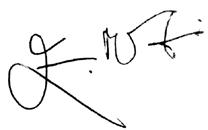
11 Issue N º 4
~ ~ ~

 Sun Feeders by Rithika Merchant
Sun Feeders by Rithika Merchant
EMBERS OF ANTIQUITY: EXPLORING THE PRIMORDIAL AND ANCIENT FLAMES OF CREATION
I still will feel nothing by Mainak Bose
14 Fireborne

THE FIRST AND LAST BREATH
by Aphra Natley
My making process is often informed by my anthroposophical art therapy training, the medium’s etheric nature, and the artistic journey as ceremonial rites of passage, guided by shamanic work, which in paint application can be reductive: forms and narratives appear for a time & might disappear, but their transience and teaching imprint on me as their energy refines.
Each painting emerges through the sensory experience of the body; through contemplation, the gateway of the heart, through perception of loving-kindness, and an intuitive application (mostly) with watercolours. I am at once also facing outwards: I intuit what I feel to be the need of the time, in our collective energy. A painting is my sentient teacher of non-duality, offering a slow window to confide in and illuminate soul nature; the result intends to represent and inspire soul consciousness and the working through of collective shadow and karma, of form giving way to energy, the mystery of life, whilst revering Spirit in nature, indigenous knowledge, psychophilosophy, music, poetry, and my work as a therapist & healer.
16 Fireborne

17 Issue N º 4
METAMORPHOSIS
by Amalia Rachel
• Tell me about yourself.
I’m a self-taught artist, a mother, and a mystic. In my early twenties, focusing and completing projects were incredibly challenging for me. I’ve been on a long journey with that, almost like rewiring my brain and teaching myself a new way of being to paint as I do now consistently. When I’m not painting, I enjoy going on adventures with my son and weaving threads in social settings. Hosting parties, workshops, and ceremonies invigorates me.
• Where are you from and how does it affect your artwork?
I’m from Stockholm, Sweden, and I live very close to a large forest, which heavily influences my work. I visit it daily to connect with Mother Earth. My ancestors are from the far north of Sweden, and I’ve always felt drawn to and fascinated by those landscapes. I believe there’s something in my DNA that feels at home in those environments. Some of my work reflects those landscapes. Though I haven’t visited the area often, there’s a longing within me to go there more frequently, which is portrayed in some of my paintings.
• How have your experiences, life and dreams shaped your artwork?
I‘ve always been intrigued by the mysteries of life. As a child, I played in the forest, drawing otherworldly creatures, and everything felt magical. Life took me away from my true nature, only for me to realize the importance of always connecting with and living that inner truth. Today, I feel like I’m living the dreams that child once had in many ways. I believe we rediscover our true nature by journeying inward and letting go of distractions. My work stems from that inner place, aiming to inspire others to connect with their inner selves.
• Where do you find inspiration? What inspires you?
I’m inspired by the landscapes of Northern Sweden, the forest where I live, and the community of wholehearted people around me. Most importantly, I’m inspired by the inner transformations of humans. Change varies for everyone, but within each transformational story, there are common threads and patterns we can all relate to. I seek out those patterns, which I try to capture in my art.
• What does your work aim to say, and what’s the purpose or goal of your work?
Once a painting is finished, it takes on a life of its own, with people worldwide interpreting it differently. However, the intention behind all my art is to remind people of our connection to the whole. We are all the universe experiencing itself, sustained by Mother Earth. Through our individual transformational journeys, we ultimately realize this connection.
18 Fireborne
Metamorphosis


20 Fireborne Witches
• What motivates you to create?
My motivation for creating is composed of several things. Firstly, it’s where I find energy. When I paint or draw, I often enter a flow state, which makes me feel whole. If too much time passes without me painting, I feel like something’s missing in my life. Additionally, I’m motivated to paint because I deeply believe that all humans are born with gifts, and by pursuing those gifts, we somehow contribute to a better world. We spread harmony. One of my gifts is painting, so I paint to spread harmony.
• What themes are present in your artwork?
The main themes of my work are our connection to the whole, the metamorphosis of human life, and the rising of the divine feminine in union with the divine masculine.
• Describe the intention behind the artworks depicted in the Invict/us Fireborne edition. What does the symbol of fire mean to you and within your artwork?
All the artworks seen in Invict/ us contain humans dancing around a fire. I often include that in my work because I believe there’s a remembrance in us as we see that. It’s deeply rooted in our DNA – to dance, to gather around a fire. Our ancestors have done so for thousands of years. In modern society, this simple act has almost been forgotten, and I think that – in most cases, without even being aware of it — our human souls feel a deep sense of longing and loss until we find our way back to that fire. For me, fire also represents transformation. Something is being burnt — transformed into heat to keep us warm.
As a collective, our species must go trough a transformation if we are to survive on this planet. I think many of us will face that transformation during our lifetimes (and most of us already do). Somehow, my intuition is telling me that the way to survive that transformation is to remember what has been forgotten and merge it with the new. And so, I’m trying to remind us all...
• Invict/us admires your imagery of metamorphosis, incorporating ancient motifs such as nature and femininity. Could you elaborate on this?
The Metamorphosis painting depicts an old wise woman watching over the humans around the fire. She symbolizes our reconnection with the divine feminine and the re-entering of the wise woman into our societies. There was a time not that long ago when wise women were burned in those fires. The Metamorphosis painting is a kind of reclamation. Today, women around the world who would previously have been called witches can freely dance around those fires. (Sadly, not in every country but at least in most of the Western world). As we go through life and grow older, we become wise women. We become the channels of wisdom that are so deeply needed in our world today. I hope that each of us realizes that we are the ones we and our ancestors have been waiting for. Being a channel for wisdom takes courage, but if we don’t do it, who will?
21 Issue N º 4

22 Fireborne
King Warrior Magician Lover

23 Issue N º 4
Dance of Remembrance
• Tell me about your favorite medium.
I mostly use acrylic paint. Acrylics dry much faster than oil, which is convenient for me as a mom of a toddler with a studio at home. However, I often find myself attempting to slow down the drying process and mimic the appearance of oil. So, if I weren’t so busy, I’d likely paint with oils, haha. Many of my earlier works are created on my iPad using a drawing app called Procreate. Nevertheless, I’m gradually transitioning to the analog way of painting. There’s a vitality that comes with the unpredictability of real-life materials when working with a genuine canvas and acrylics.
• Describe your artist space.
My artist space is in my home. I reside in an attic floor apartment that’s part of a villa in a cozy area outside of Stockholm. It’s truly romantic. Gardens with apple trees, old oak trees, and a lake adorn the surroundings just outside my windows. This home came to me with profound synchronicity during a separation about a year ago. I have my little art studio corner there, striking the perfect balance between messy and organized. Tubes of paint often litter the floor, and dark chocolate + tea almost always accompany me as I paint.
• How do you overcome creative blocks?
The trick is to simply get started. Creativity likes to find us working and available. I do my best to show up even when I don’t feel inspired. I attempt to create a variety of pieces, even if they’re unattractive, and eventually, Creativity recognizes my efforts and decides to pay a visit.
• Describe how art is important to society.
Art possesses the ability to convey that which cannot be articulated yet. In this critical juncture in history, humanity is undergoing a significant transformation on a collective scale. But where are we headed? I firmly believe that artists play a crucial role in visualizing a new vision for humanity. Artists are often sensitive individuals, and I wish every artist understood that our sensitivity serves a purpose! It’s the superpower that enables us to see through illusions and envision a new reality. That’s the primary reason why I pick up the brush and paint every day.
• Does art help you in other areas of your life?
In some peculiar way, I believe each painting I create is a form of prayer or a means to decipher what I intuitively sense is forthcoming. Upon reflection, I’ve noticed that some of my work later materialized into reality. Moreover, painting serves as a means for me to maintain balance. If I don’t paint, life feels devoid of meaning. In my younger years, when I didn’t paint as much as my soul desired, I attempted to fill that void with other activities such as shopping or excessive partying. Today, I can’t allow too much time to pass without painting because I know I’m a much better mom, friend, and family member when I paint regularly.
24 Fireborne

25 Issue N º 4
Grandmother Spirit
FIRE OF THE GODS, HANDS OF THE MORTALS
Written by Gregory Gregori
Out of all the elements fire is the one that must be started by man. Yes the gods and graces may have occasionally awed our ancestors with a lightning bolt and a subsequent forest conflagration, but as we understand it, fire is the uniquely human element in its practical application. Anyone who has spent time with or around a fire with people knows what a uniquely powerful focus of love and community it can truly be. In ancient Greece each state, city or village possessed its own central hearth and sacred fire, the prytaneum, representing the unity and vitality of the community. The fire was kept alight continuously, tended by the king or members of his family. The fires were sacred to Hestia, goddess of the hearth and home. It was stolen by Prometheos from the gods and given to mankind so they may share in the power of the celestials, and he in turn was punished by Zeus, sentenced for his insolence by being chained to a mountain. To have his everregenerating liver pecked out and eaten out every day by an eagle for an eternity.
Many gods who represented various aspects of fire. Hephaestos himself god of volcanos, and techne (a term encompassing all craftmanship, technology and art), and particularly metalworking – was another fire deity expressing another polarity of its uses. Our very technology today is another great entity fuelled by fire. Fossil fuels, renewable electricity, nuclear and conventional bombs, the combustion engine, computers – all products of our forges and laboratories. The elements themselves were rarely personified as deities used in active worship – after all great Mother Earth,
Father Sky, The Fires of Tartarus and The Waters of the Abyss all came into creation before the Olympians that humans later worshiped. Our technology changed our gods, and our power changed with it. First, they had it. Now mere mortals have been playing with it for over 10,000 years – what will be its crowning glory?
We were, and are, finally able to smith great metals into beautiful jewellery as well as brutal weaponry. The very arts of alchemy and transformational science of chemistry and all they encompass are dependant on it as the agent of change between the other materials of life. Fire can burn or it can comfort, it can build or it can destroy. However, its power and effects depend on its conditions and the actions surrounding it. More directly – its effects are dependent on the intention of its use.
For me the beauty of fire doesn’t lie just in its dramatic destructive ability, but also its subtlety. It is in fact absolutely everywhere – infused into the very essence of dynamism on this planet and our lives. How often is a candle lit, or incense burnt in ritual and prayer around the world. Fire itself is invoked, and lives as flame for but a brief period, till it is either spent of fuel or starved by its environment.
26 Fireborne
Our environment. Pour planet with all its life. The plants store solar energy in the form of chemical bonds in their growing structure. The chemical atoms themselves are sourced from the other alchemical elements (hydrogen from water, oxygen and carbon dioxide from air, phosphorus and nitrogen from the earth), but the energy powering it all is the light and heat from the blazing nuclear fires of the sun. Glory be to the miracle of photosynthesis. Fire, along with air are the animators, as water and earth are the body of life and living beings. The very warmth of our bodies is generated by our own extraction of solar fire stored in food from the bodily process of digestion and respiration. When we burn wood, it is the very same nourishing light and heat that was absorbed by the living plants green foliage that is now being released, being bound in the structure and order of the matters atomic structure, now spectacularly being rearranged. An orgy of energy and matter.
In modern science we are reminded that first law of thermodynamics states that when there is fire (enthalpy), a spontaneous cascade of events leads to an inescapable increase in the total chaos (entropy) of the system. Thus it is up to us to balance it with our other elements, and bind it with our connection to the aether, so that we may wield it wisely and in the building of harmony and community.
Alchemically and psycho-spiritually the element encompasses creativity, will and passion, as well as transformation. The heat of life, the origin of all our electrical power, the warmth in our homes and the zesting of our red blood. Take a moment to breathe and think, see, and know how we use fire now. How do you use fire in your body and in the world? In our role today in creating and utilising technology, as well as in the fire of our individual passion - how much do we use to tend to our warmth and that of others.
Stolen from the gods.
Pieces of the sun.
Let us use the fire for the light and good of everyone.

27 Issue N º 4
Prometheus by Christian Schussele
BORN OF FIRE
by Emma Surtees
Born of fire? I certainly am. I see it in the stars, in my rage, in my passion, and in my art reflecting and flickering back at me. I no longer deny the feminine in me that desires to sew; to embroider, stitch by stitch, the fabric of the unseen underneath and the topside showy Self. The silver dagger of my needle penetrates, as it is also threaded. This process melts duality. This process unites me with my ancestors. This process reveals myself to me. The stab of the needle, the slender, silvery point directing energy to create form which pleases. No longer a pastime of the ‘incompetent’, the ‘incomplete’ female. Instead, an empowered act of legitimate creation. The divine feminine emerges in unashamedly tough, silken bands and spools of yarn. Yarn to harness, yarn to spin the tale, and to carry on the story.

28 Fireborne
~ ~ ~
Self Portrait with Golden Rays, Embroidery

29 Issue N º 4
Sacred Yoni, Embroidery

30 Fireborne
Yin Yang Full Moon Circle, Embroidery
The fire circle embroidery is inspired by a gathering in the Sussex woodland on the full moon of 6th September 2017. The masculine fire we sat around gazing into, while the feminine, deep well - the reason for choosing the location of the gathering - silently ebbed in the darkness... that is, until someone noticed the full moon shining in its reflection! At this point, we all moved around the well and watched the moon - itself a reflection of the sun. The two can never be apart. I dreamt of this embroidery even as I was sitting in that sacred circle. I imagined the bird’s eye view and felt the natural yin/yang shape which was being formed energetically. It had already created itself before it came to be.

I was wedded to the Universe in a ceremony of divine inclination. This psychological journey with the beyond served as the healing catalyst to reach a state of self-acceptance. Summon the unseen forces, and they will answer. Call upon your ancestors, and they will be with you. The ceremony took place in Panama amidst the presence of cows, spiders, and snakes. The choice to invigorate and empower the Will elevated this performance artwork into something tangible, visceral, and enduring.
31 Issue N º 4
Sparky Marries the Universe

32 Fireborne
Astrological Birth Chart with Pokemon Cards
The astrological natal chart serves as a soul map. The planets embody timeless archetypes of humanity, which remain unchanged yet continually evolve. This paradox places us between divinity and the mundane; humour and severity; all the dualistic aspects that resonate throughout our perceived world. Thus, I crafted an astrological mandala—an exploration into the human psyche. What better way to integrate the inner child than by using my Pokémon card collection, cut and formed into largescale fractals of the flower of life sacred geometry? Each element found its place, every planet left its mark, and every degree of the cosmic wheel was meticulously accounted for with mathematical precision. It was an exercise in understanding the fire within: my Sagittarius Sun, my Aries Moon. My volatile, oscillating emotions and creativity sometimes converge to create a harmony of spheres, as depicted here.

33 Issue N º 4
Sparky Marries the Universe
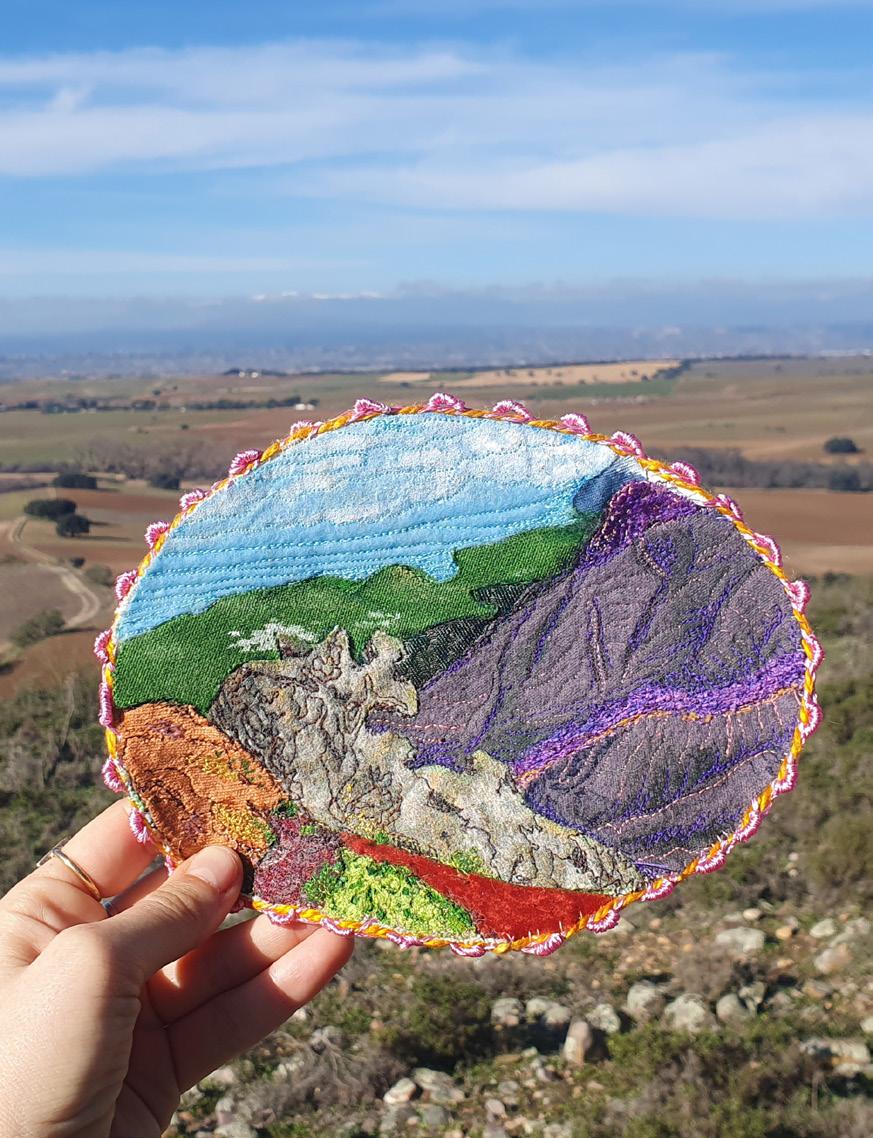

35 Issue N º 4
From Teno Alto to the Sea
THE SACRED DANCE OF FLAMES: EXPLORING THE RITUALISTIC USE OF FIRE IN CEREMONIES
Written by Andrea Stellar Folk
Peering into the dancing flames, the crackling wood creates sparks of tiny shooting stars, smoke gently twirling up into the heavens, the piercing yet comforting scent reaching our nostrils. The warmth of the flames fosters a sense of unity with the natural world. A belonging. The ancient act of sitting around a fire is one that most, if not all, humans on our Earth are familiar with. There is an age-old understanding that fire, in its essence, serves as a catalyst for communal bonding and collective celebration.

Fire. It can warm our bodies, cook our food or burn down our house. Fire’s primal force has captivated humanity since its discovery. In ceremonies across all continents, from rites of passage to elaborate festivals, the use of fire has played a central role, weaving its flickering movement into the very fabric of human culture and spirituality. As flames dance and crackle, they mirror the ebb and flow of life’s cycles – the constant process of creation, destruction, and rebirth.
The earliest instances of fire’s ceremonial significance can be traced back to ancient civilisations. In Hinduism, the yajna is a fundamental practice where the sacrificial fire, known as agni, is considered a messenger between humans and the gods. Each flicker of the flame represents a divine presence, and the offerings made into the fire symbolise a connection with the spiritual realm, invoking a sense of purification and renewal, transforming the mundane into the sacred. Another iconic Hindu use of fire in ceremony is seen in the ancient ritual of aarti. Held at the banks of sacred rivers or temples, devotees offer lamps to deities, creating a breathtaking spectacle of light and devotion. The warmth of the flames mirrors the ardour of their faith, while the rising smoke symbolizes prayers ascending to the divine.
36 Fireborne
Fire Calendar by Vladimir Kush

37 Issue N º 4
Greeting the Full Moon by West Penwith
In indigenous and animistic cultures, fire plays a central role in spiritual practices and ceremonies. During rites of passage or initiation ceremonies marking significant transitions in individuals’ lives, the flickering flames become a metaphorical crucible, where the initiate undergoes a symbolic death and rebirth, emerging transformed and ready to embrace their new role within the community. In the earth medicine ceremonies that I myself facilitate with the use of psychedelic mushrooms, fire plays an essential role as well. My teachers taught me that fire is necessary for the transmutation of old, stagnant energies as well as for creating a bridge to the unseen world. Even a candle is enough, as long as the element fire is present.
Another beautiful practice is the Native American and pre-Hispanic sweat lodge or temazcal (from the Nahuatl temazcalli, ‘house where you sweat’) ceremony, where the purifying power of fire and steam are utilised. Participants gather in a small, enclosed space, and heated stones are placed in a pit at the centre after having lain in a carefully tended fire. Water infused with herbs is poured over the stones, creating steam and increasing the heat until becoming almost unbearable. This intense environment, often times accompanied by the sound of the drum and medicine songs and prayers, is believed to facilitate physical, emotional, and spiritual purification. Each with their own geographic and cultural roots, the modern-day use of the sauna or steam bath originally stem from the same shamanic practice.

38 Fireborne
Cosmic Dance by Mirella Salamé (Earth pigments)

In ancient Greece, we find the Olympic flame as a symbol of the connection between humanity and the gods. The flame, kindled at the altar of Hestia, the goddess of the hearth, burned, and still burns today, throughout the duration of the Olympic Games, serving as a representation of purity, enlightenment, and the enduring spirit of competition.
The Celtic festival of Beltane celebrated on May 1st, marks the beginning of the warmer season. Central to this celebration is the lighting of bonfires. Blazing across the landscape, they symbolise the sun’s return and the fertility of the land. The flames are not merely a source of warmth and light; they embody the vital energy needed for growth and abundance. Participants often jump over the fires as a symbolic gesture of purification, courage and the welcoming of new possibilities.
Beyond the metaphorical and symbolic, the practical applications of fire in ceremony are equally profound. The ancient art of fire-walking, found in various cultures, is a demonstration of the human capacity to overcome fear
and transform adversity. Participants, guided by a spiritual leader, traverse a bed of hot embers unscathed, embodying the triumph of mind over matter. It is a living testament to the transformative power of fire, demonstrating that, equivalent to the sweat lodge, even the most intense heat can be navigated with the right mindset and spiritual intent
Whether as a symbol of purification, a conduit to the divine, or a catalyst for personal transformation, fire continues to hold a mesmerising and sacred role in our lives. The dance of flames not only illuminates the physical world but also sparks a deeper understanding of our connection to the spiritual and the eternal. As we gaze into the flickering embers, we find a timeless language that speaks to the essence of what it means to be human.
// Founder of Stellar Folk, an organisation which hosts transformational ceremonies, retreats and one-on-one sessions in Ibiza, focusing on earth medicine and selfinquiry.
www.stellarfolk.com
@stellarfolk
39
Fire Dance by Joseph Tomanek
THE KISS
by Graham Dean
Poem by unknown artist
The site of the naked flame
Tinderwood kindling. Tenderly gathering rolling and rubbing sparking a crackling.
A puffed pointed breath of air, and there: Set!
From nowhere.
A great flourishing tonguelick of flame the sticks sweat yet burn and again, yearn to red’ember an infernal journey. Like comets to their great source, in the dry night sky.
Quivering trees in the wavy heated light
from the beyond, watch forest’s delight:
The site, of the naked flame.
40 Fireborne

41 Issue N º 4
The Kiss by Graham Dean

42
SUN OF GOD
by Torus Energy
Born in the Midlands countryside and exploring worlds in search of constant inspiration, the work he creates attempts to represent the powerful unification of all human spirits, intertwining with the natural world and our role within it.
Aspiring to bring a contemporary sense of shamanism accessible to all, through various art mediums, to convey subconscious, and hopefully conscious, messages to the viewer.
Since his earliest memories, Jack has been drawing monsters, creatures, and dinosaurs from his imagination. This passion has taken him on a winding adventure around the globe, opening many doors. Working freelance as a designer in everything from clothing to album covers, his thirst for inspiration has led him to study human anatomy, animal anatomy, cultural imagery, and architecture.
43 Issue N º 4
NOTHING TO PROVE
by Mainak Bose
Mainak Bose evokes a dreamlike essence through the artful fusion of double exposures. His creative vision transcends the confines of a single photograph, seeking fulfillment in the harmonious interplay of overlapping images. Each composition becomes a tapestry woven from the threads of his imagination.

44 Fireborne
Deprogramming

Don’t suffer
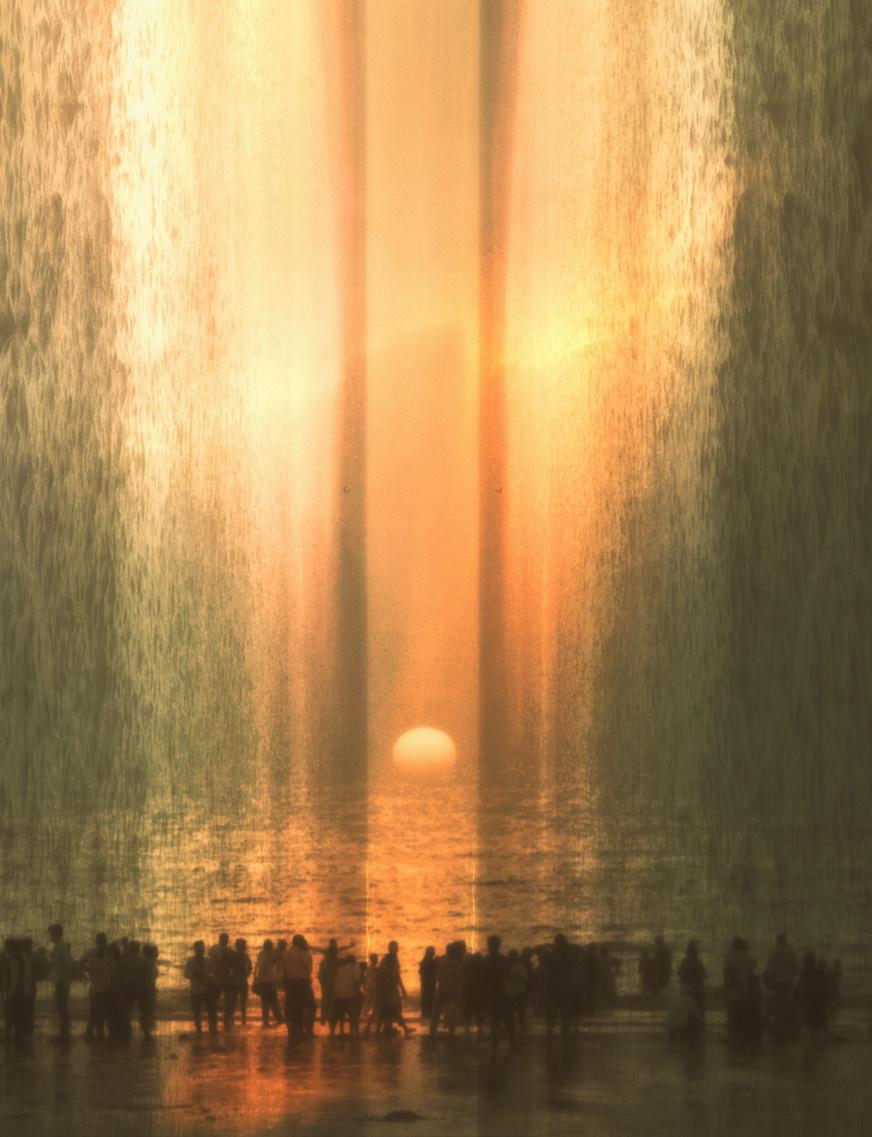

47 Issue N º 4
Left: This time it will be different
Right: Futility

48 Fireborne

49 Issue N º 4
to Prove
Nothing

50 Fireborne Send it up
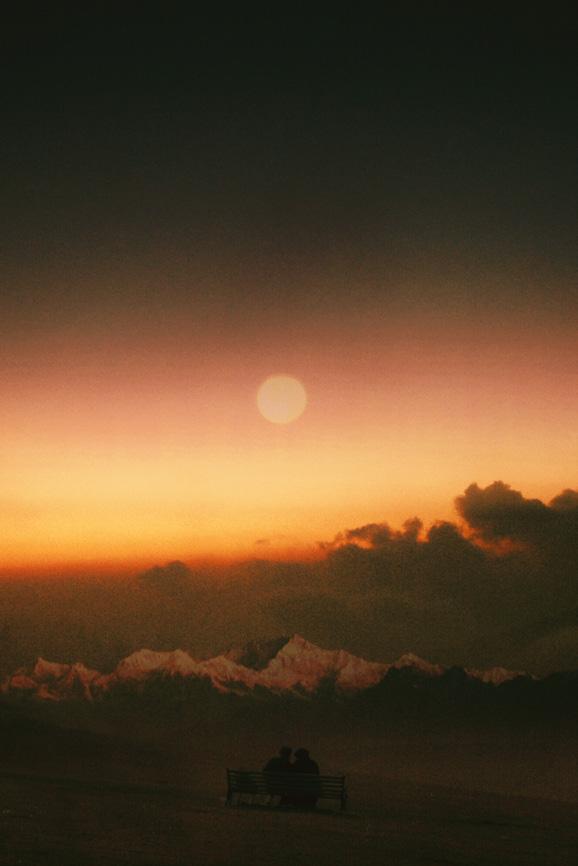
51 Issue N º 4 Programming
EARTH’S INFERNO: HARNESSING FIRE’S WRATH
52 Fireborne
Black Zaporozhets and Dragon’s Teeth, by Oleksii Revika

OF FIRE AND MAN
Written by Davide Lepore
In the beginning it was NOT the word. Nor was it a gentle hand that shaped the first thoughts at the dawn of time. It was fire. Fire was the spark that started it all. Before the fire there was only darkness. The darkness of the night, the darkness of winter, and the darkness of the mind.
It came from the sky, in the fading remains of a long-gone day. The light, the noise, the heat. The lightning bolt stretched out of the clouds like a bony finger reaching the Earth from the firmament, then the forest was enveloped in columns of burning red light.
The small creatures, still faltering on their hind legs, froze in position, torn between the fear-fuelled instinct to run for shelter and the awe induced by that infinite power fallen from above. Curious, and scared, eyes looked into that blazing brightness, fruitlessly desperate to understand this second dawn at the end of the day. For the first time, fire looked at its own image reflected in conscious eyes. Why were these animals not running in fear?
Until then the creatures had been undistinguishable from all the other beasts roaming aimlessly through the chaos of instinct. But that night, as the sky had reached the Earth, so the creatures reached to meet this new power. An embryo of reason was generated.
Many perished that night, a sacrifice that taught the rest of them how angry the power from the sky could be. Yet a few brave ones fought the odds to try and balance a shard of that might on sticks and dry branches. Soon they learned
how to domesticate it and safely keep it in their dens. A fragment of day to preserve through the night. A splinter of summer to fight the cold of winter.
In this artificial extension of the day the creatures learned to dare more. When the long nights, no more bound by forced darkness, filled their heads with thoughts, they learned how to harness them into signs, so they would not be lost into dreams. History was born and throughout history more bonfires were lit to please Those living in the sky, who changed names as the centuries changed, but never their purpose.
In mystical gratitude they fed the fire with their prayers and preys, with their harvests and, sometimes, with their pairs, to turn these gifts into smoke, to reach and please the sky.
They placed fire down below, as punishment, and fire high above for redemption. Good and Evil equally marked by that burning power.
But history proceeded ferociously and so did this ominous bond. Evoking fire became easier and easier, faster and faster. The creatures built tools, and the tools grew complex, turned into machines, producing fire themselves.
The creatures fought each other with fire, in the name of fire. In a blind attempt to be worthy of that power they turned all truth into ashes. And they finally feared it. They thought it evil. They looked into the final fire devastating their world searching for its monstrous soul to blame. But in the flames they could see only their own reflections. They saw the real power, the real evil, the real monsters. They saw Men.
54 Fireborne




55 Issue N º 4
(I) Overture, (II) Crescendo, (III) Rallentando, (IV) Diminuendo by Paul Dessau
WAR ON UKRAINE
by Oleksii Revika
Oleksii is a Ukrainian artist born in the city of Melitopol, Zaporizhia region in 1979. He graduated from the National Academy of Fine Arts and Architecture in Kyiv, specializing in art history, and became the organizer of the project “CultOffice”, aimed at popularizing young Ukrainian artists in the business environment. Later he completed his studies at the International Association of Art Therapists of Ukraine. Based on art therapy techniques “karakuli”, he developed

Crime-Stones from the Sky
his own visual language for working in graphic media. He is the author of several graphic series united in one cycle called “Premonition”, dedicated to Russia’s hybrid war against Ukraine. He collaborated as an illustrator on political and social themes with the media resource “Bily-Vily”, covering issues of corruption, diplomacy, and the military. Since the beginning of Russia’s full-scale invasion of Ukraine, he has been working on a series of posters called “Red Line”. The first work of the series was a story about Crimea. The process of the poster creation was interrupted by rocket shelling of Kyiv and other cities in Ukraine. Since the spring of 2022, works from this series have become part of various anti-war projects involving Ukrainian artists, both in Ukraine and in many cities in Europe and the United States.
56 Fireborne Children, 2022, Red Line

Some works from this series have sparked significant feedback and resonance and have contributed to spreading information about Russia’s aggression against Ukraine. The artwork “Loss” was involved in the diplomatic mission of the President of Ukraine during a visit to the head of the Catholic Church, Pope Francis, in the Vatican. The most horrific consequences of Russian aggression are the deaths of Ukrainian children, the killing of the future, inflicting severe psychological trauma, abductions, and violence:

“All these messages I managed to formulate in one simple and understandable image of the artwork - “Loss”. Of course, the meeting of the President of Ukraine with the head of the Catholic Church caused considerable “burning” in Russia, and the work “Loss,” at that time, became an important tool for understanding what the modern civilized world is facing. This act confirms and distinguishes the uniqueness of Ukrainian society, which since the restoration of Ukraine’s independence has actively engaged art as a resistance element against injustice. “The idea of creating the Red Line poster series arose on the eve of Russia’s largescale invasion, and I had already begun work on it. The main artistic tool in creating the poster series is a ballpoint pen, which allows complex plots to be realized in a concise manner, enriching the work with volume and depth of expression. Understanding that in the first weeks of the invasion, Ukrainians have the same mixture of feelings and experiences helped to find certain components for clear artistic expression. The house - as a border, the body - as an individuality, are the main characters of my works. The goal of the work was to show not the weakness and helplessness of Ukrainians against the Moscow onslaught, but the anger and unbearable desire for resistance and life. Orienting towards the European viewer, I counted on evoking empathy and sharp emotional sympathy for Ukrainians who resist on the front lines, in occupation, and in the rear. Relying on the empathy of Europeans is considered absolutely appropriate, given the forced and mass exodus of Ukrainian women and children to EU countries. Confirmation of this was and remains the personal story of my children and wife, who managed to leave in the first days and were accepted in one of the EU countries.”
58 Fireborne
Bread -
Brama-Kharkiv, 2022, Red Line
Ukrainian Fairway, 2022





61 Issue N º 4
Ukrainian
CapeSummer in Crimea
Duration -
Pixel, 2023
Fortress-Mariupol, 2022
ENDANGERED EARTH: DEATH TRANSFORMATION
by Mari Westeng Sørensen
At the core of my creative process lies a concern for nature and humanity. Using stylized, patterned, and brightly colored human figures deliberately ambiguous in their appearance, I aim to delve into the detrimental impact of humanity on our endangered Earth, which I perceive to be accelerating at this juncture.

62 Fireborne
The Ocean has Given me Everything I Love

Death Transformation
My style is influenced by the radical opposition in art, and the notion that culturally shared images are crucial to our understanding of environmental, cultural, and social interactions. I am fascinated by patterns and details as a means to captivate the viewer, aiming to underscore the often disregarded infinite intricacies of our surroundings.
/ / @witchtremor
/ / witchtremor.bigcartel.com
63 Issue N º 4
GLOBAL ‘SECURITY’
by Lola Mansell
Public protest amplifies the voices of civilians, which are often drowned out amid political debates and dictation. It is a means to express passion and opinion regarding what is important to the people. These photos were taken at a protest against the new French law “Sécurité Globale,” which threatens a €45,000 fine and up to a year in prison for filming or photographing the police with ‘bad intent’, seen by many as a violation of modern democracy.
Living in Paris, I frequently find myself immersed in protests as the French persistently take to the streets year after year to advocate for justice. Although these images convey an almost still atmosphere, the moments and visuals they capture create the ambiance of a battleground, symbolizing the struggle for legal rights. I aimed to document these events to raise awareness of the current atmosphere in one of the world’s most visited capitals.
64 Fireborne


66 Fireborne

67 Issue N º 4

68 Fireborne

69 Issue N º 4


70 Fireborne

EMBERS OF EMPATHY
Poem by Elli Pipic
When looking deeply into the eyes of the child within you
You hold a gaze carrying an endless capacity for compassion
When you are challenged by the throws of tragedy
Your family’s fabric, chosen and given, weaves nets around you to soften the blow
When a friend feels pain and shock and worry
You create solace for them in shared silence and protection
When you witness war’s unspeakable violence
Bring to life that gift of compassion for every lost one
When you are privileged to grasp political agendas
Remember that a sensitive solidarity weaves bandages for wounds stronger than scarring
When you sense shudders of an unpredictable catastrophe
Listen and hold space for prayers of all origin
Promoting peace
Promoting humanity
72 Fireborne

And even still there was
73 Issue N º 4
Hope by Caitlin Connolly

THAT LETHAL CLOUD
by Kirsty Harris
“I explore nuclear explosions as cultural, historical, and iconic symbols. Referencing the scale, beauty, and abhorrent nature of the atom bomb, I delve into the periphery of the subject— the myths, characters, and surrounding evidence. I work across a wide range of media, from vast oil paintings, tapestries, projections, and audioscapes to delicate paintings on glass and ceramics that you could hold in your hand.
Scale is an important aspect of my practice. For instance, in the painting ‘Charlie,’ each square inch of linen represents 4 tons of TNT—which, in turn, is the unit of measurement used to signify the yield of the explosion. These large paintings aim to confront the viewer with an all-consuming landscape. If they inspect them up close, for a moment in time, this is all they can see.
I’m fascinated by the beauty and awe of the landscape—the dust, the glow, the force of the explosion. In this master plan to kill ourselves off, we’ve shown ourselves the end.”
75 Issue N º 4
Charlie, Oil on Unstretched Linen

The decisive moment—a meditation on a split second. That split second iconically represents our race to self-destruction. The beauty and awe of the landscape—the dust, the glow, the force of the explosion. The myths surrounding characters in this master plan to kill ourselves off. The fight for survival.
We’ve shown ourselves.
THE END.
76 Fireborne
First Lightning
Buster Jangle Easy


LAST SURVIVORS
by Vincent Karcher
Another year of intense, recordbreaking wildfires across Canada. This series of photographs sheds light on the rebirth of nature amidst the apocalyptic landscape: the last survivors and the resurgence of life.
Raw images are captured using tools that illuminate catastrophic environments subjectively, painting them with light and color.

Issue N º 4

STOP THE COUP
by César Vásquez Altamirano
César’s analogue photographs from the Boris Johnson protests aimed to ‘stop the coup,’ reflecting widespread discontent and opposition to Johnson’s leadership and Brexit strategy. They serve as a poignant reminder of the cyclical nature of political upheavals. In these images, the echoes of history resonate as they parallel the events of 409 AD when Britain slipped from the control of the Roman Empire, drawing an ironic connection between the modern-day struggle for political autonomy and the historical quest for independence.
Historical evidence suggests that late Roman Britain faced similar challenges to personal and group identities as those being stirred by the current Brexit debate. It is plausible that individuals who now align themselves as Leavers and Remainers would have engaged in fervent debates over issues like foreign immigration and the benefits of remaining within the Roman Empire had they lived in the 5th century. As we reflect on this historical parallel, it is crucial to consider the potential repercussions. We must hope that the more drastic transformations experienced in the 5th century, such as the decline of urban life and the collapse of a monetary economy, do not manifest as their 21st-century equivalents.
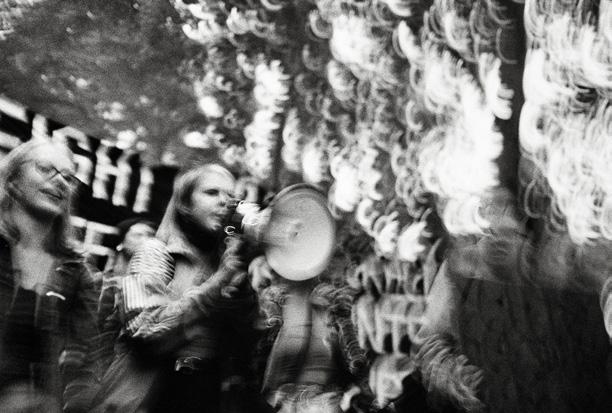
81 Issue N º 4

82 Fireborne

83 Issue N º 4
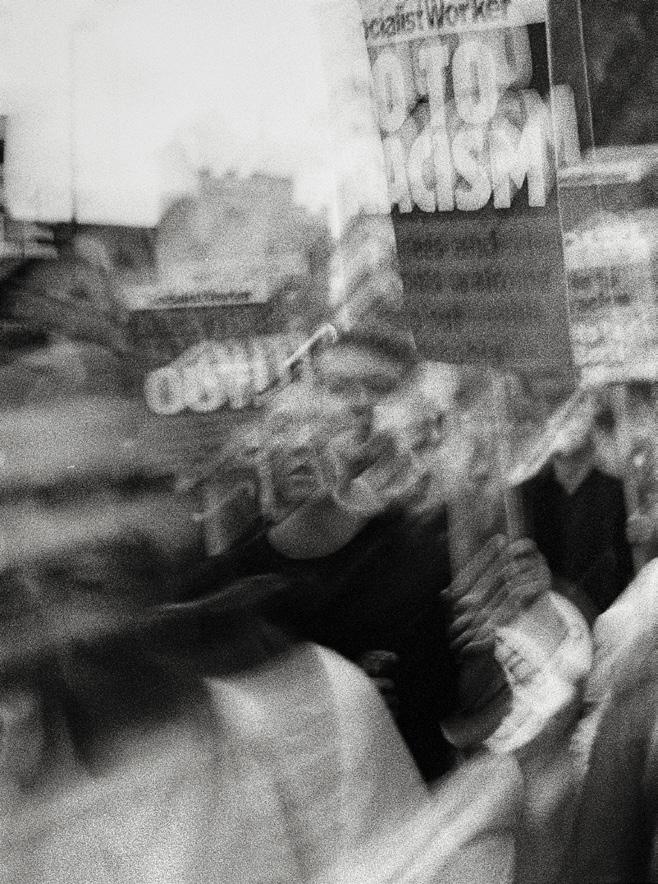
84 Fireborne

85 Issue N º 4
HOW I LEARNED [TO LOVE] THE ALGORITHM
by Jarrett Edmund
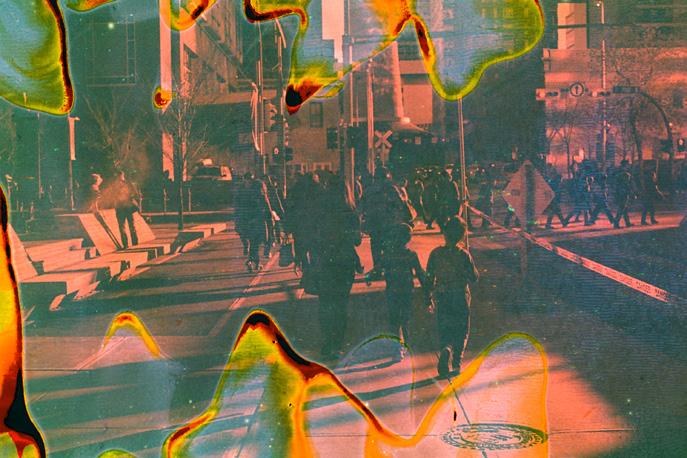
86 Fireborne
Normal, 35 mm film
Jarrett is an experimental multimedia artist who employs techniques in analogue film photography and typewriting to evoke surrealist imagery. He is passionate about pushing the boundaries of mediums through abstract fiction, while also commenting on poignant sociological and political issues within a contemporary Canadian landscape.
The collected works are part of an ongoing project that investigates ecodeath and the Anthropocene through a toxic post-human narrative. The project invokes surrealist imagery, both written and photographic, to explore themes of climate catastrophe, automation, mental illness, and our imminent doom.

87 Issue N º 4
Nuxeous, 35 mm film
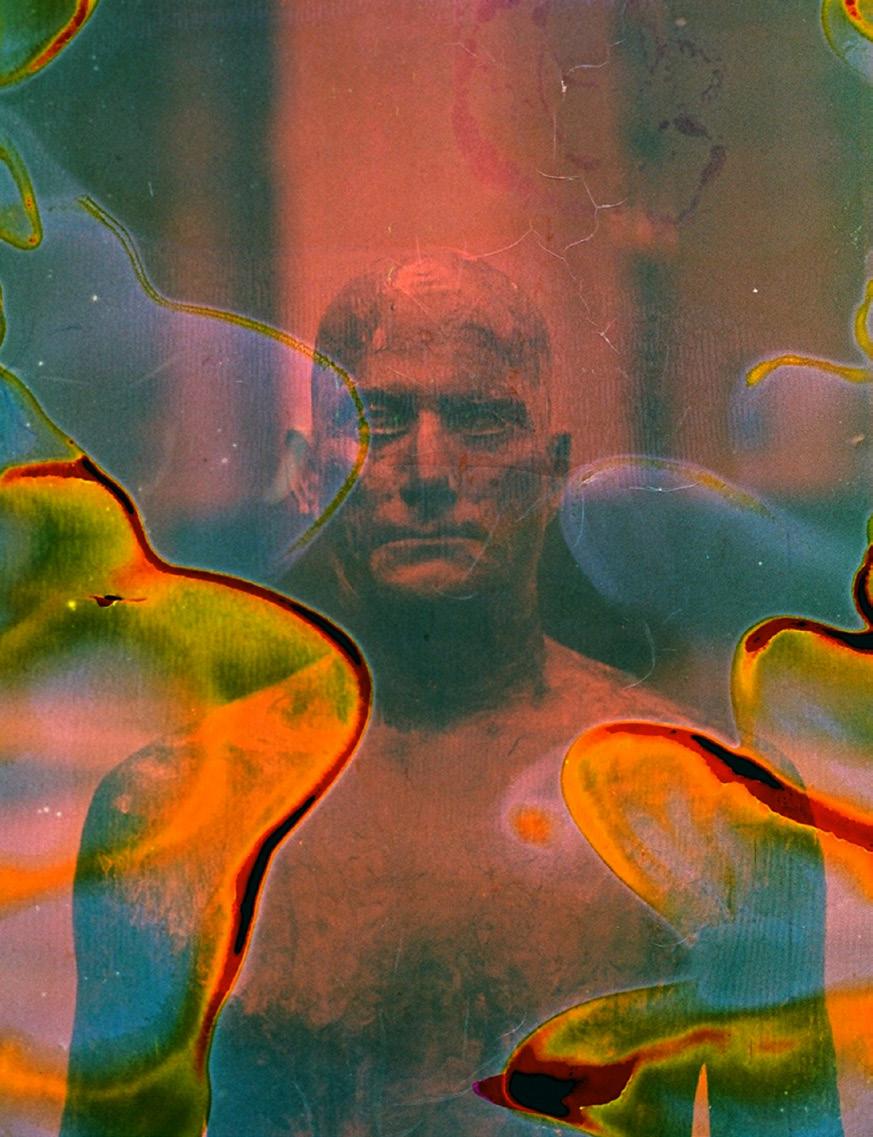

89 Issue N º 4 Sleeper, 35 mm film
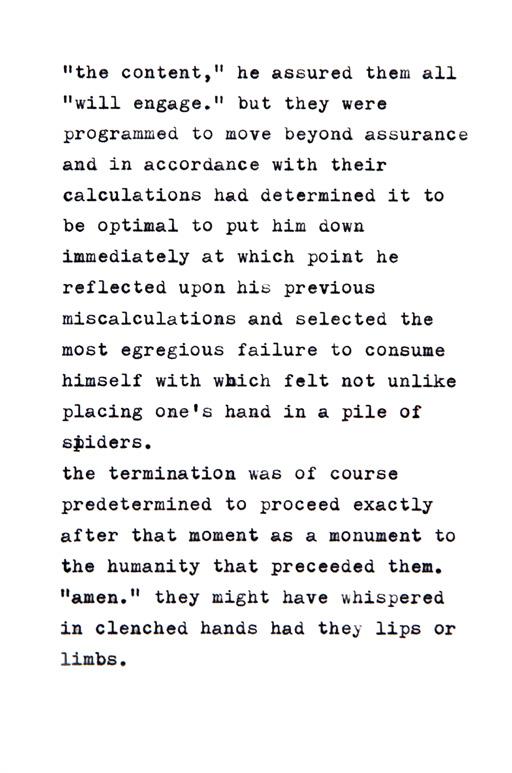
90 Fireborne
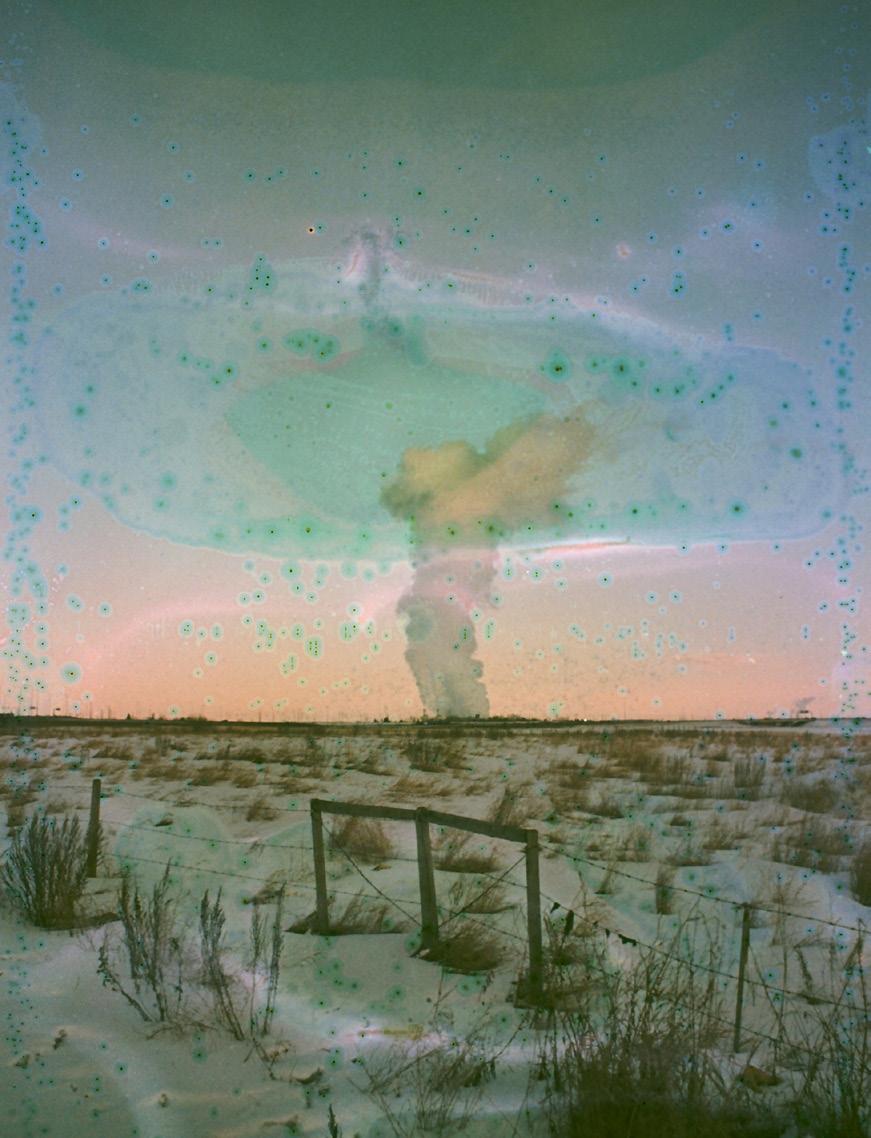
THE FIRE THIS TIME
Article, Photographs & Poem by Robert Hunter Jones
November, 2020: Rain was falling into ash all over my home state of Oregon, and in an infamous press conference, muddy rivulets ran down the lumpy terrain of Rudy Giuliani’s face while he attempted to burn American democracy to the ground at the behest of Donald Trump.
These discrete events feel correlated. Between the murder of George Floyd in May of 2020 and a rash of landscape-scale fires along the entire West Coast of the US, it seemed America had staggered across some ash-mottled Rubicon—eyes burning in the smokey downslope wind—the path ahead obscured by a weird mix of tear gas and the toxic exhalations of burning trailer parks.
Late in the 2020 US Presidential campaign, incumbent Trump made a grudging stop in California while the west coast fires were still in full rage. In a telling exchange, state officials pleaded with the truculent President to acknowledge a link between climate change and the wind driven firestorms engulfing cities and towns in three coastal states.
His reply: “I don’t think science knows.”
Ironically, there is a germ of truth in this otherwise imbecilic utterance. Humanity as a whole has little appetite for nuance, and yet no scientist worthy of the name is going to claim, categorically, that the science of climate is settled, nor how its nascent effects figure in any particular fire. And yet, as bad as it seemed as 2020 mercifully wheezed to an end, worse is yet to come.

In May of 1990, I joined Arrowhead Hotshots, a type-one National Park Service fire crew based in Sequoia/Kings Canyon National Park in California’s Sierra Nevada Range. As it happens, two of my immediate supervisors, Dan Buckley and Ben Jacobs, would go on to play pivotal roles in NPS fire in the decades after I left the fire world in 1996.
Jacobs stayed at Sequoia/Kings Canyon, successfully burning and reburning all of the named groves of giant sequoia accessible enough to treat with fire, work that has saved, for now,some of the most iconic trees on earth. The last unit Jacobs burned before his retirement in 2014—the Northeast corner of Grant Grove, was used as an anchoring point for a firing operation in 2015 to blunt the 150-thousand-acre Rough Fire as it rolled up out of Sierra National Forest and slammed into the park. When the fire ran into the treated groves, it died out, saving vast numbers of sequoia and the developed area above them.
92 Fireborne
Robert Hunter Jones, 1990
Baboon Fire, Crater Lake National Park, 1994
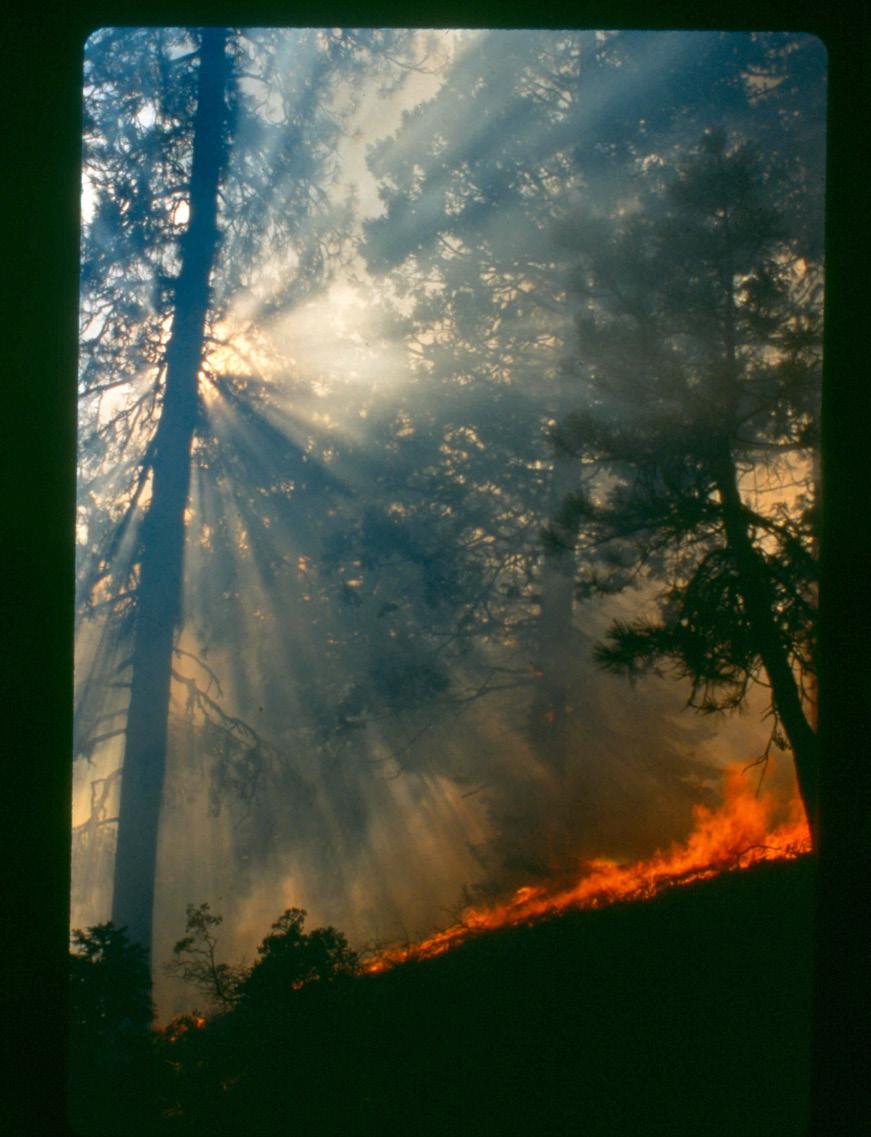

94 Fireborne
Atwell prescribed burn, Sequoia NP, 1995
Five years later, in 2020, the 150-thousand-acre Castle Fire raged upslope from Sequoia National Forest into several untreated groves in a remote section of Sequoia National Park, killing over 400 “monarchs”, sequoia four feet or greater in diameter, some thousands of years old that had survived dozens of burns prior to fire exclusion. (Post-fire images on the park’s website make grim viewing.)
Dan Buckley ascended from superintendent of Arrowhead Hotshots in 1996 to become National Park Service Fire Director in 2015. In 2020, he stepped back from the national stage torun the fire program at Yosemite National Park in his final years before retirement. An unabashed advocate of fire use, his team managed 9000 acres of natural fire in Yosemite’s high country while wildfire devastated the much of the west. (The last of Yosemite’s natural ignitions were declared out, ironically, on January 6, 2021, the day Trump urged his followers to “fight like hell” to stop the peaceful transfer of power in Washington, DC.)

Buckley suggested to me that the sequoia tree is the arboreal equivalent of the polar bear—a charismatic indicator, the loss of which signals the unravelling of a vast ecosystem upon which thousands of species depend. Like those iconic images of a lone white bear drifting on a shard of detached ice, sequoia groves lift like embattled green islands above the drought-shocked forests around them.
Indeed, while the Castle Fire savaged sequoia groves to the south, the 379,000acre Creek Fire exploded upslope toward the Mariposa Grove in Yosemite. Buckley recalled frenetically weighing in real time three distinct firing scenarios to try to save the grove. In the end, a wind shift sent the fire east just before it entered the park, a gust of serendipity the future is unlikely to afford twice.
A year later, lightning strikes ignited three blazes in Sequoia/Kings Canyon National Park, becoming the 88,000-acre KNP complex that burned through Redwood Canyon, famed birthplace, sixty years ago, of NPS efforts to reintroduce fire to wilderness landscapes. 1300 monarchs were killed outright, with 1000 more expected to die within three to five years. Since 2015, thirty percent of all sequoia trees in their native range have died by fire. Without prior prescribed fire treatment, losses would have been far higher.
I would like to be optimistic about forest health, but objectively there is little reason for hope. Recent fires manifest in a world just 1.2 degrees Celsius above preindustrial levels in forests skewed by a century of fire exclusion. Yes, burn on our terms when we can, but we are the mythical Dutch boy with his finger in the dike. Just as ice rots around the floating bear, fire will have its say despite election outcomes and more or less dithering on climate. Pray if you wish. Fire is a secular dance between physics, chemistry, and biology. Recent seasons are but a flickering vanguard we will look back on soon enough with nostalgia.
95 Issue N º 4
Rebecca Wilson at Baboon Fire, Crater Lake National Park, 1994
To Sharpen a Pulaski*
“All things have come now into their comparisons.”
Robert Duncan -Rites of Participation
At first the file skitters and slides across years of attempts to introduce an edge. When it takes, the clean peel of metal announces the arrival of new possibilities.
It is here that patience weds itself to love. Most men want the quick edge. It blunts a tool and cheats the steel of its natural appetites. A delicately
tapered head bites deep and stays hungry longer. Work the file gently. Begin with the shoulders and forgive yourself all the initial awkwardness. Let the metal
undress itself one luminous stroke at a time. A reciprocal softness waits in the steel to reflect a version of your face you could never have guessed existed.
* A tool used by firefighters, its head half ax and half grubbing hoe.
Reprinted by permission of Silverfish Review Press

96 Fireborne
Baboon Fire, Crater Lake National Park, 1994
‘Jones worked for eight seasons on National Park Service fire crews, five at Crater Lake National Park, where he conducted research on fire effects and fire suppression, and three seasons with Arrowhead Hotshots, a Type 1 fire crew based in Sequoia/Kings Canyon National Park. He published a series of essays in Wild Earth and Wildfire Magazine arguing for the return of fire to wilderness ecosystems and the need to reshape the role of professional wildland firefighters to meet the challenges posed by a century of widespread fire suppression.
His poetry has appeared, or is forthcoming, in Alaska Quarterly Review, American Poetry Review, Cumberland Poetry Review, Fireweed, Northwest Review, Poetry Northwest, Seattle Review, and West Wind Review, and in the chapbook The Clever Man’s Forest, Traprock Press, 2011.’
/ / www.roberthunterjones.com
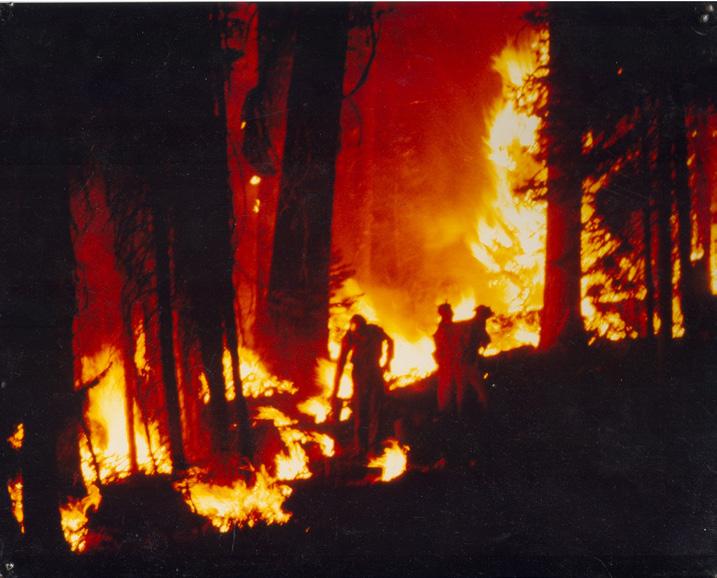
97 Issue N º 4
Backfire, Arrowhead Hotshots, Steamboat Fire, Yosemite NP, August, 1990
REKINDLING FLAMES: BLAZE OF PROGRESS RISING FROM THE ASHES
98 Fireborne
From the Ashes by Daniel
Woodfield
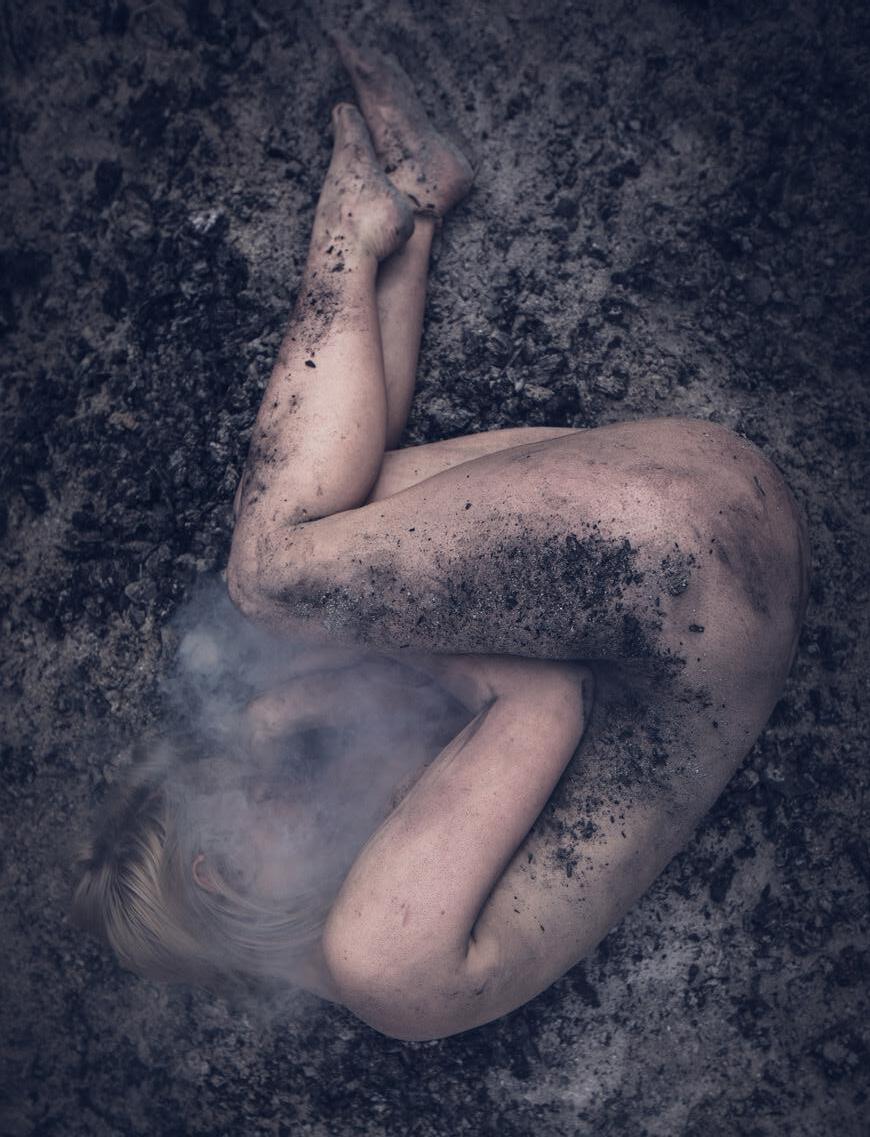
DESERT BODY
She’ll purify you
And She’ll test you
She’ll move you (to calm waters)
And drown you (in her depth)
This rage has been
Deep.
Down.
Buried.
But;
It’s rising
And;
It cannot be burnt by torches
Nor smoked screened around the stake
— The eternal flame Is alight —
And it’s getting bloody + beautifully bright
A healing sweat lodge
Purging the pores of past pompous peculiarity
Another round of steam
The coals warm + alight
From The Roaring Truth Of Her Ever Blazing Heart
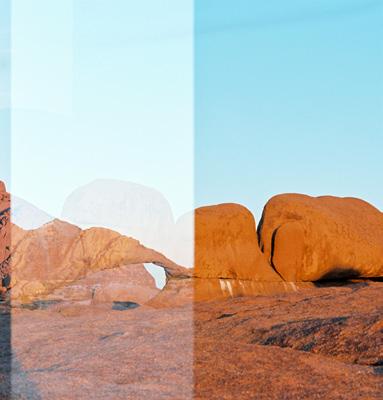
100 Fireborne
Photographs & Poem by Kerstin de Beer


101 Issue N º 4

102 Fireborne
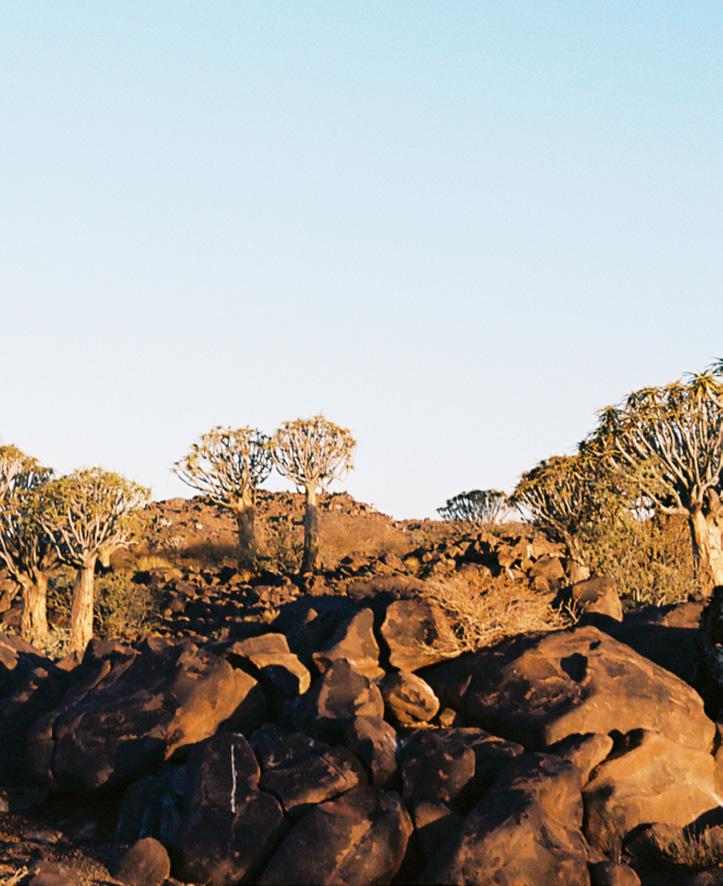
103 Issue N º 4

104 Fireborne

105 Issue N º 4

106 Fireborne
GAMBIA BUSH-BURNER
by Vincent Karcher
A portrait triptych of young Gambian men posing against a backdrop of devastating flames. A smoky sky and pastel ambiance prevail, with a cloud of smog lingering on the horizon over West Africa for weeks.
Farmers burn their crop from the last harvest to enrich the soil with fertilizing matter and facilitate the clearing of bushes. This technique also aids in the expansion of new farmlands.

It is part of a traditional agricultural cycle, where smoky days constitute a season in themselves, lasting for months. This method has been observed and practiced worldwide for centuries.
Here, a short series comprises environmental portraits of the young men, known as Bush Burners, engaged in these demanding agricultural cycles.
107 Issue N º 4

108 Fireborne
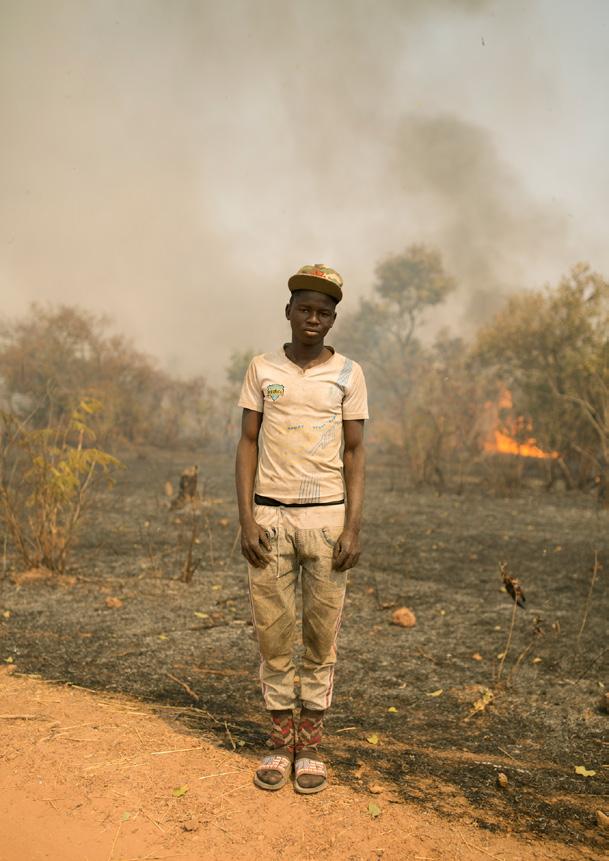
109 Issue N º 4
TÚNELS (I,II,III)
A MAN IN FLAMES
by Cadhla Kennedy Ko
Documenting

110 Fireborne
~ ~ ~
an ancestral ritual by Nil Nebot, Jan Nebot and Riaq Miuq in collserola.


111 Issue N º 4

112 Fireborne

113 Issue N º 4
A Man in Flames when unpredictable double exposures create magic
QUAND LA LUMIÈRE BRILLE, DANSENT LES OMBRES
WHEN THE LIGHT SHINES,THE SHADOWS DANCE
Written by ZackieL Lewis-Griffiths
The first time we performed together was during a full moon, at the very moment of a total lunar eclipse. Around a great fire I’ll never forget, a whole gathering of folk were uplifted. Plenty drummers we stirred the mood, and in the hour or so that the moon was veiled-over in Pai’s night sky we gloried and raved. Soumia danced with that scarf of hers that flashes all blue-greens and golds. I helped make a space for her with candles, we gave the others the sign, then we faced each other in the crowd. The way she moved brought the music ablaze.
It had been just a few days earlier that she’d approached me with the idea. She asked if I’d prepare something on guitar to accompany her and a percussionist for the performance, having seen me play at local venues and liking my sound. It was a poetic thought, to have the guitar, but we hadn’t experienced the almighty energy of an eclipse before. When the moment came, I picked up a drum, and rejoiced wholeheartedly in the frenetic and surreal heat and beat of that hour that the moon slipped off into the other realms of the Earth’s shadow, leaving humanity to make whole the void with our rhythms and fire-dance. The people released their voices and soared and stamped their feet as one in reveries.
I first saw her spin fire a few nights later, out on the streets. It was a time of such heightened creativity and ease of expression, empty pockets but abundant inspiration, and deciding to start busking together happened quickly and naturally. We hit the main market strip of that touristy but particularly special town and people would converge in their dozens. She spun fire-ropes in these early days of little equipment. The flames go right up to near the hands to tremendous effect of flaming shapes and patterns, while still being light and versatile to spin. This allows for ‘contact’ movements, freezing the ropes in sudden positions, bringing them close to the body and twirling with more complex flow. I’d play drums or guitar, chanted, sang, and made the rallying calls. She would drop the props and continue dancing when they ran out of flames, because she didn’t. A wild-eyed smile on her face, iris’s flashing, jet-black hair and long braids a-whirl, at her most joyous and liberated when embodying her element.
I had been freely travelling for over a year by then, through Australia, India and Nepal before coming to Thailand. I would organise regular events, busking and performing everywhere from street corners to 5-star hotels to make a living nomadically. Soumia had also been travelling for many months, through South-East Asia. She was a seasoned, awe-inspiringly liberated and confident solo traveller and performer when we met. A fine example of how the world is indeed open and can prove safe to women who choose to free-travel alone.
by Jolly Thompson
114 Fireborne

Soumia was so alive these days, often surrounded by other firespinners who were the rough-glamorous, freakybeautiful nightingales of the events and festivals. Flaming-up the nights, simultaneously majestic and scruffy, ever the big characters. Community lived, the artists co-created, the fire people sparked their passions in acrobatics and soulshakes smelling of kerosene and wicked glee. Fire-dancing, it’s not so often called but it is: emotive and elemental movement, to the beat of original drums. Free in the wildness of the pyromania and beauty of flow-states reached amidst the blaze that envelops their experiences for those fleetingly transcendental performances. Soum rocked-up and joined the crews without trouble as is her way, soon stepping out into the center of the large circles of folks gazing, to become a radiant shock to our senses each time it was her turn to burn, flickering in and out of her trance states, evoking such talents at such dazzling speeds.
Our first performance on stage took place a week or two after getting together, at the almost impossibly nice Shambhala festival a few hours south of Pai. We hitchhiked, and made it just on time. I had applied to play only a week before, and we were utterly bewildered to see on the set-time boards upon arrival that we’d been booked to open the main stage to hundreds of people in less than an hour! An American jazz musician, masterful, we knew from Pai happened to be on hand and agreed to join us, accompanying my songs on trumpet and mandolin. Soum came flying out on to the grassy space between the stage and the audience like a most graceful of phoenixes, lighting up all our faces with her fire as we played. Mr sunshine casting his rays from the horn and strings, all deep smiles and mighty dreadlocks, and this formidable human with her elegance and flames helped bring the music and moment to great heights. Our early shows set the tone of openness and artistic collaboration that would become a strong theme of our ‘spectacle’, which we then toured through India and Nepal for the next 4 months before bringing it back to Europe.
 by Yanis Cernesse
by Yanis Cernesse
116 Fireborne
full article can be found on the blog page of ZackieL’s website www.zackielmusic.com
The
 by Yanis Cernesse
by Yanis Cernesse
I had my first real sight of the ‘shadow-dancing’ that inspired our stage name in Cochin, Kerala soon after arriving in India. Soum danced especially for the beautiful, profoundly kind grandmother who hosted us in her homestay, as a thank you. The ladies let me stay; I sat very still. Spirits, at least very strong sentiments and entities of energies, rippling currents in the air, rose in the flickering candlelight of that room, their motions around the walls in tandem with Soumia’s. A warm Kerala night, a little old house in the town centre, dusty walls like ancient adobe. The elderly didi (Hindi for ‘sister’) was a medicine woman, a wonderful cook, a mother to one and all. I trust she was well aware of the mystical.
We came home to a crazy place. Can you imagine? Wild were the mind-set shifts, our adaptions, our re-morphing passions. It certainly paid its toll on us both. We were well aware of a great deal of the hardships of people’s lives in the places we visited, despite all the ways we were genuinely graced by benevolence and fortune everywhere we went. People’s grinding poverty, mass scales. Raw, naked and in-your-face suffering and distress.
The ways the planet is being abused. We gained intense perspectives of these realities we often have but a layered glimpse of. I joined activists in Australia fighting state and corporate ecocide and colonial oppression toward indigenous communities, working with leading First Nation custodians of Country (the land) and culture. Soum volunteered with slum children in Jaipur and young people with disabilities in Indonesia, living at home with them and becoming family.
Upon returning to Europe with newly schooled perspectives, we realised more seriously than ever our civilisations’ messes and stress. Institutions that need burning from the roots up. People already working to rise from these ashes in the wreckage. How could we stand by idly when so much needs to change? When so much is now plastic, shadows insane in injustice? We began to represent a consciousness and involvement in these movements as part of our act. It’s in the essence of my songs, in Soum’s fervour and alchemical power.
117
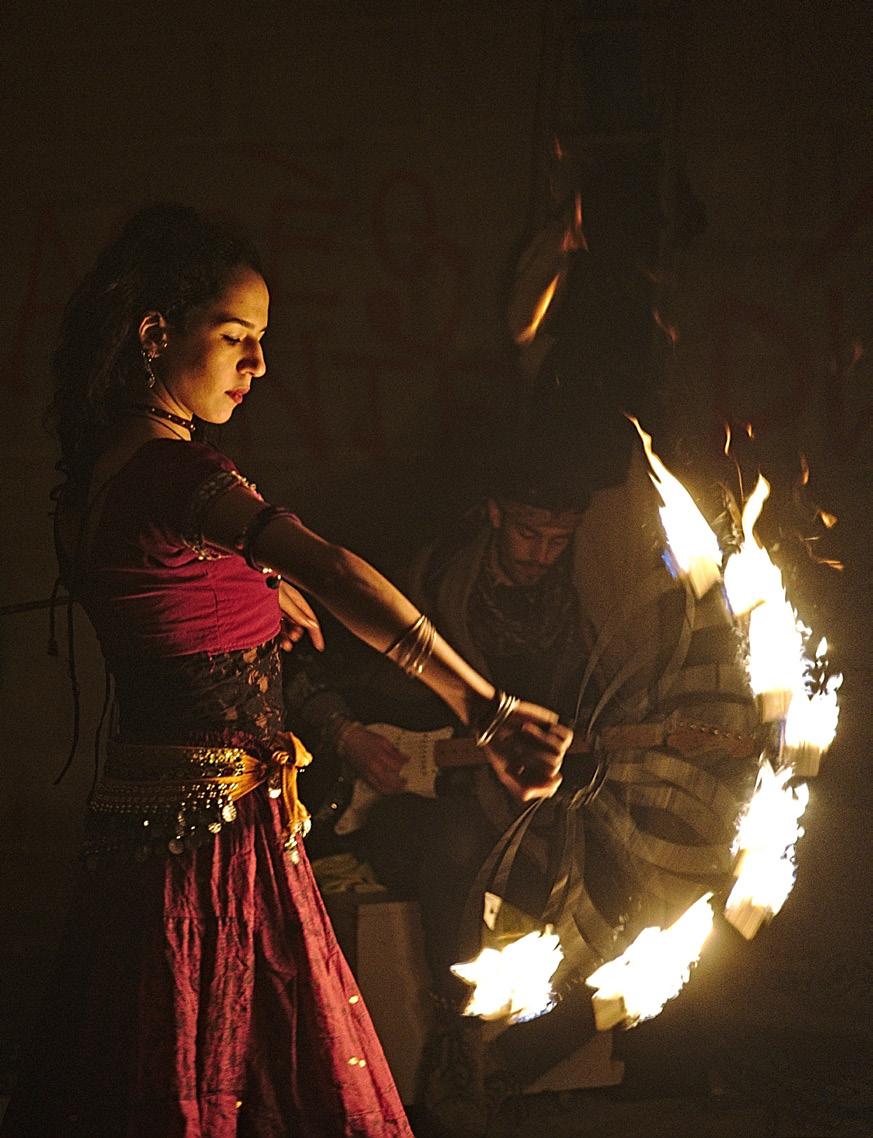 by Yanis Cernesse
by Yanis Cernesse
We performed in activist squats, occupied safe houses and grassroots refugee centers, blockade sites and festivals dedicated to the rebel arts of culture and street performance. We worked as independent journalists and translators for the Yellow Vest protest movement in France, getting caught up in bloody and horrific warfare on the streets between gangs of obviously sadistic riot police and Molotov-wielding militants, violent clashes between far-right mobs and the antifa ‘black blocs’. We involved ourselves in many other artistic, activist and humanitarian projects and communities at the same time as we returned to our studies.
The arts are social acts of healing, embodied liberation and empowerment. We believe that artists have a responsibility to reflect upon and regeneratively manifest the most important sentiments of the times, especially when historically the right to do so has often been stolen by the powers that didn’t aught to be. We must keep shouting from the rooftops, bringing the heat to spirits.
We are journey people, wild people. We won’t ever fit anywhere, not really (supposing that other people do, or at least want to?). We found each other, luminous, and combined our art and the forces of our hearts in ways that have reformed and grown us in endless ways we may never fully appreciate. We hope we can bring light to this place we’re passing through, the kind of light that dances the shadows, rather than letting them dance us. We can put a smile on your face, far deeper than the marionettes, and share grace and all that’s most whole, soul. We spin flames, and you’ll see the world ablaze as we struggle and rejoice, fiercely love, rage, and place something beautiful and colourful in the way of the rat race.
Through myriad cultures and immense lands just as with ours here and now we continued to chase, we will continue to make. Totalities of cycles, space is the place, bright full moon hidden from the light by Earth’s for a time, clear night with skies of stars, fire on the ground in the fire-place, electricity in the air enough to affect you as a live conductor, spine like a pylon, a mother serpent’s grace. We’re acting in the ways that seem to make the most sense in a world of the senseless disconnectors, spiritual warmongers, mental dictators, insane directions, dirty discords and corrupted resonance. More so, Earth in the light of a million suns, of endless goodness, potentials boundless, as the womb, and the sacred embers in both the seen and unseen which are indeed still the strongest, eternal; still so very much at home.
We’ll dance the shadows of this world we’ve inherited that our children will inherit
We shall not be overwhelmed or out-paced or possessed or out-stepped.
The world is burning
We know all about tuning the lengths of waves, A living heritage with all most flammable in the re-emergences.
Reach us for the genesis of the love, light-sourced for shadow disciplines
Wild winds
medicines,solaces
Familiars, musics in natural Yahweh, friends of soul and alliances
Earth-shakers in ember dances Eve, (æther) Ever in togetherness.
119 Issue N º 4
WITHIN ME, A WOMB ON FIRE
by Nali Lia Weinman
Within me, a Womb on fire is a journey, a ritual, a process of reconnection from dissociation to sensation, and every mark in between. This work chronicles the journey of learning to see within and paint from sensation rather than representation.
After many years of experiencing bodily dissociation, Weinman began using her paintbrush as an extension of her ability to express every sensation from within her body. Where there was numbness and disconnection, movement blossomed in the act of her listening. Every new sensation became a paint stroke, and every paint stroke became an act of connection that ignited a fire of remembrance. Weinman’s process often involved painting with her eyes closed or her other hand on her lower abdomen, where there had been the most numbness and dissociation. This painting is a tapestry of bodily reclamation, encompassing all the pain and pleasure of returning home to oneself after being absent or displaced for too long.
120 Fireborne
~ ~ ~
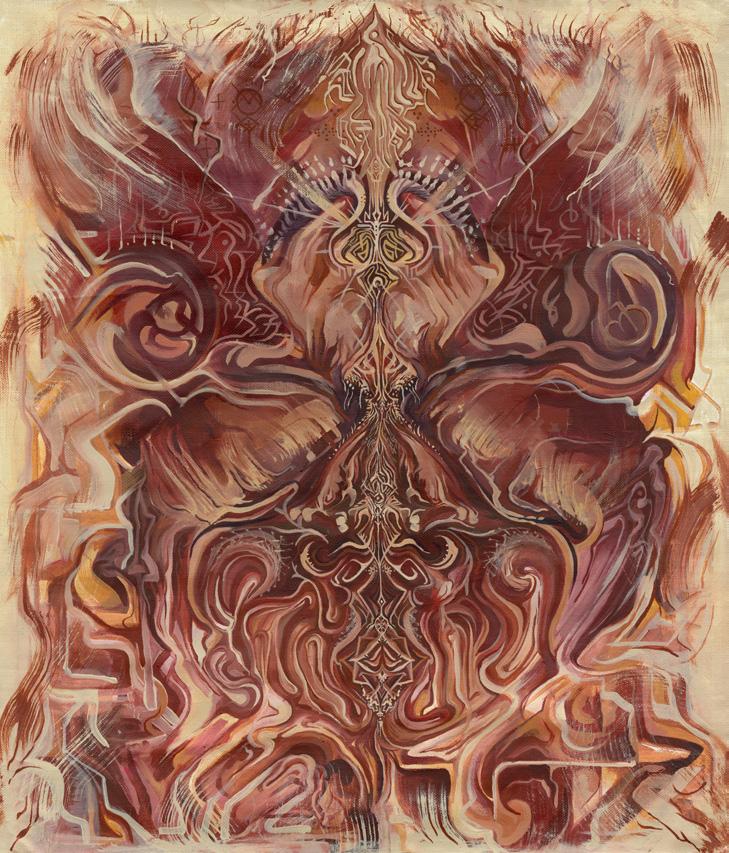
121 Issue N º 4
CREATION & DESTRUCTION
by Ellie Benton
The creation of something is the destruction of what was before. Likewise, the destruction of something is the creation of what takes its place. Therefore, there is no such thing as creation without destruction, and destruction without creation. They are not independent processes; they are part of the same cycle of change, continually occurring.
Ellie Benton primarily works in intuitive painting to explore the emotional, physical, and spiritual dynamics of human interactions and relationships. While predominantly abstract, some paintings touch upon figurative representations, including elements found in nature. This blurs the line between the representational and geometric shapes. There is a strong sense of life force in all of Ellie’s paintings, and by detaching them from realistic representation, they offer the viewer an opportunity to create their own meaning or associations.
Fire isn’t merely a flickering flame; it symbolizes transformation, passion, and ancient rituals. There is a strong sense of community and collaboration that arises from sharing sound with others around a fire. It evokes a sense of belonging and simplicity that links us back to our ancestors.
Fire brings people together; we are united in warmth and co-creation. Ceremonial rituals infuse the air with a sense of purpose, while the rhythmic pulse of drumming echoes ancient beats. Dancing bodies become vessels of expression. Together, these elements transcend the tangible, inviting us to connect with our primal energy at the heart of human expression.
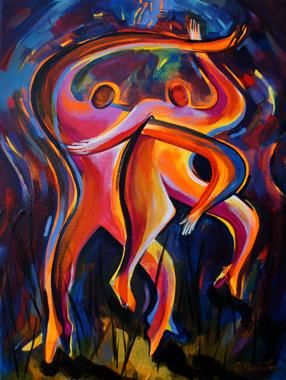
122 Fireborne
The Jam
Fire Dance



Dancing with my Shadow
125 Issue N º 4
Barefoot Bob
RAKU
by Monica Vaccari
Fire plays a leading role in the most unpredictable and spectacular ceramic technique, Raku.
The origin of raku finds its roots in the Japanese tea ceremony. The ideogram for raku evokes pleasure, joy, spiritual enjoyment, happiness, and well-being. The term raku derives from the honor granted in the 16th century to a member of a dynasty of potters who dedicated his works to the tea ceremony. At that time, the technique involved removing incandescent bowls from the kiln and, during cooling, pouring tea into them, which penetrated the cracks that had formed and colored them.
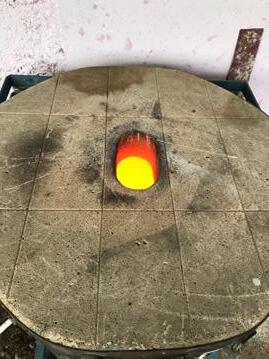
The English ceramist Bernard Leach introduced raku to the West. However, it was only in the 1960s in the United States that the Japanese technique transformed and became very popular. Ceramicists and sculptors consider it highly effective for greater artistic expression and versatility.
The difference in the new technique compared to the original Japanese one is that the object, after being removed from the kiln and exposed to the open air, is then subsequently placed in containers containing flammable substances such as paper or sawdust. At this point, the contact of the incandescent object with the flammable material creates combustion. The object is enveloped by flames for a few seconds until the container is closed. This technique is used to starve the piece of oxygen, which creates a myriad of colors within the glaze. Giving lustre to the glaze and black color to the unglazed parts of the object.
These phases represent a very delicate moment for the ceramist. Everything happens quickly and with precise movements. Nothing is left to chance. Timing is crucial because it influences the final result. If the time between removal from the kiln and placement in the container is short and there is an abundant amount of flammable material, there will be good oxygen reduction.
126 Fireborne

127 Issue N º 4
The colors will also be more striking, and the cracks more pronounced by thermal striking. The black smoke created due to the absence of oxygen will be more intense. It is crucial to execute the process well from the beginning, that is when the bisque (objects previously fired at low temperature) are placed in the gas or wood-fired kiln for about an hour until the glaze matures at a temperature between 950 and 1000 degrees. The temperature is gradually increased to avoid breakage.
Just before removing the objects from the kiln, the metal containers are filled with paper and sawdust. After removal from the kiln, the objects are left in closed containers until they cool down.
The phase of the raku process that excites me the most is when the object is enveloped by fire. The flames penetrate inside it, often creating spectacular effects. But the final surprise is when the object is washed and cleaned of the black patina created by combustion smoke. The colors emerge in all their strength and beauty, as well as the metallic lusters and the cracks in the glaze, always unpredictable and mysterious, sometimes small and numerous, other times larger and scattered without precise geometry.
I believe that the beauty of raku lies in its unpredictability. The exciting wonder that is renewed every time one witnesses the final result: always considering that, in addition to the ceramist, four other fundamental protagonists come into play: earth, air, fire, and water.


128 Fireborne

129 Issue N º 4
IGNITE THE SOUL
by Klaudia Zabek
The paintings represent the act of letting in, breaking down our internal barriers to allow something beautiful to flourish and grow.
The close-ups almost resemble flames, showcasing a multitude of colors representing the complexity of the fire element. On one side, they symbolize burning, destruction, and pain, while on the other, they represent warmth, the source of light, and a force that gives new life.

130 Fireborne


132 Fireborne

133 Issue N º 4
ETERNAL METAMORPHOSIS OF THE BEING
Illustrations by Evelyne Postic
Excerpt from a text by Alla Chernetska
Evelyne Postic’s artistic journey began after she reached her thirties, but the intensity with which she has created art for the last three decades stems from her childhood. At a young age, Postic fell ill with a major pulmonary infection and underwent a torturous treatment that was practiced in those days. Subsequently, lungs were to feature heavily in her drawings as important “characters”.
Postic’s practice allowed her to escape the realities of everyday life. From the beginning, her hybrid forms combined human, plant, and animal elements in perpetual transformation. Just as Postic faced challenges in life, her characters adapted to their environment to survive. Postic has always been passionate about science, especially biology and the metamorphosis of living beings in the process of evolution.
Evelyne’s work is inspired by West African traditions of rituals and voodoo. The faces in profile with big eyes began to resemble African masks. Sometimes their eyes are invisible, or they are filled with spirals - symbols of the cycle of life and transformation. We have the impression that they do not see, but rather feel the surrounding world. As the artist herself explains, “because the glance of the characters is behind his eyes, it is inside. It’s happening inside everyone.”
In Eveline’s recent works, we see more and more characters linked together by “pipes” which act as organs of a single body. Postic explains: “We are composed of atoms, then, when we die, we return to the state of gas, dust. It is horrible but we are part of this universe; it’s a big mystery. That’s why we try to understand and reassure ourselves but it is impossible.” The multiple organs in Postic’s drawings are transformed: they can be floral, they can become animals or remain an organ, everything can be mixed, everything can change, everything can create forms in different directions. If initially it is a tree, it begins to have flowers, and then becomes an organism with eyes, organs, a vagina. Often the sex of the characters takes the form of flowers. The reproductive organs of the plants arouse an aesthetic sensation, while the reproductive organs of people have become a visual taboo. In the works of Postic, the metamorphosis of the forms shows the beauty of the organs. The lungs in her drawings resemble wings that give balance to her characters. Transformation is never complete in Postic’s works. We do not know if the character is human, or whether it will become a plant or an animal. It is in perpetual mutation, like an embryo that must define its sex, or a soul that must choose whether it belongs to a human, an animal, or a plant. But, among the multitude of metamorphosed forms, sometimes we see human skulls that seem alive. As Postic said, “We must not forget that we are mortal. As if death could be alive, I want it to be a part of life. She is.”
134 Fireborne

135 Issue N º 4
The Celestial Traveler, ink on canvas, 128x102 cm

136 Fireborne

137 Issue N º 4
Titanic, ink on paper. 105x75 cm

138 Fireborne
Not War, ink on Arches paper, 49x58cm

139 Issue N º 4
The Ghosts of Japan, ink on paper, 123x103cm
MOBORAN WATER DRAGON
Poem by Joie de Winter
I am moboran.
The white yin water dragon.
I wonder if you feel me under your feet?
Flowing through the earth.
Life force water.
You sip me, but do you know me?
I wish I could slow you down, long enough to feel the land here.
Under the concrete ambition.
Offer you spaciousness, stillness and so much safety.
To help you drop into nothingness.
The world beyond pushing.
To soften with me.
Tonight lets light this sacred fire together.
And offer it our prayers, until the embers are done.
Can you wait long enough for that?
And make friends with the fire in me.
The fire opens our memories, do you remember?
It takes us back to the beginning.
Drops away our shields.
I know what it’s like to have shields.
Thankyou fire, for helping us to be present and safe.
What happens now if we are left in the silence to feel?
To soften.
To allow ourselves to sit through the noise of the mind.
What is here on the other side?
Where shall we go together?
Lets see.
I wonder if you will carry me with you?
Make space for the silence.
Into nothingness, Into everythingness.
Thankyou embers, flame, wood, air, ashes, smoke, flickers, heat, glow.
I am moboran.
140 Fireborne




141 Issue N º 4
Hand crafted Water Dragon guardian harps inspired by Moboran waterfall in Les Valley Bali
KEEP THE FIRE BURNING
Poem & Painting by
Elisa Mantovani

Dear Wild Joy,
The dust set you free,
Tankwa’s voodoo took you like a whirl wind, enraptured you with its magical spirit, awakening the heart and third eye.
Remnants of earthly pearls of sand and dirt stick to your lion’s mane, sun kissed with golden winds and breathing air.
Your eyes swallow men’s soul whole.
The vibrant frequency attracts humble, genuine joy.
Ambers, golden liquid of your eyes will remain, don’t let the juice leak.
Pour the dense liquid bronze concoction warm gently into your soul.
The burning power of the fire still flickers in your eyes.
Its spirit lingers with ferocious stinging dancing flames.
yours,
Elisa Mantovani
142 Fireborne
Metamorphosis SequenceKeep the
Fire Burning by Elisa Mantovani

ELEVATE: CONVERSATIONS WITH CREATIVE VISIONARIES
Delve into the minds of creative visionaries and thought leaders with ‘Elevate: Conversations with Creative Visionaries’, the groundbreaking podcast from invict/us. Explore the transformative power of creativity, innovation, and holistic healing through intimate conversations with artists, musicians, healers, and changemakers. Elevate invites listeners on a journey of inspiration and insight. Tune in to discover the stories behind the art, the wisdom behind the words, and the magic at the intersection of creativity and consciousness. Elevate your perspective, elevate your spirit, and elevate your life.
144 Fireborne

145 Issue N º 4

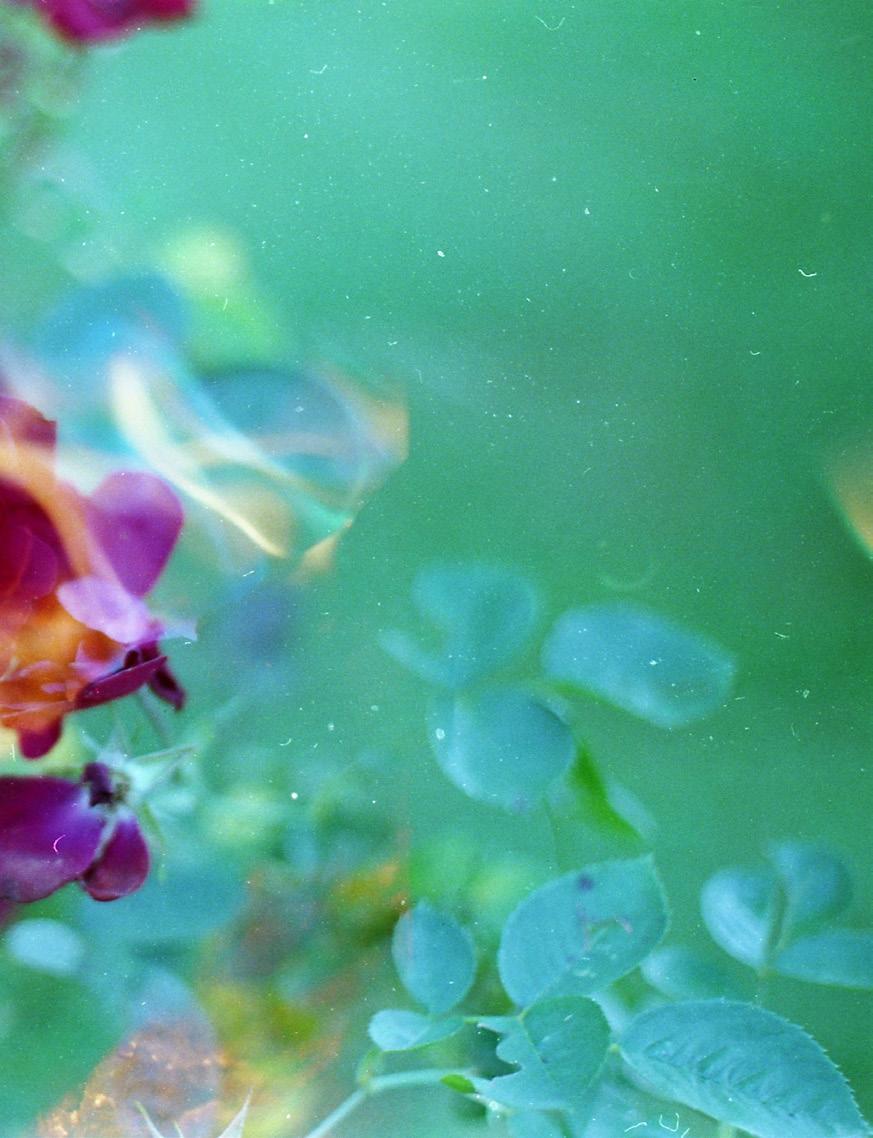 That Wild Fire II by Beth Maciorowski
That Wild Fire II by Beth Maciorowski




 That Wild Fire by Beth Maciorowski
That Wild Fire by Beth Maciorowski












 Sun Feeders by Rithika Merchant
Sun Feeders by Rithika Merchant































































































 by Yanis Cernesse
by Yanis Cernesse
 by Yanis Cernesse
by Yanis Cernesse
 by Yanis Cernesse
by Yanis Cernesse



























 That Wild Fire II by Beth Maciorowski
That Wild Fire II by Beth Maciorowski
